#field shift evolution
Explore tagged Tumblr posts
Text
BLANKMON
A prototype child-level digital monster that was created alongside the Shift-Digivice by a pair of human hackers in order to investigate the various evolutionary ramifications of a creature when exposed to a specific type of field data.


I loved the idea of the Shift Field evolution by @El_POYOMON and @ZebubAl_Zemmons.
I couldn't decide which digimon to use for this new type of evolution so it occurred to me to give the digivice an origin, creating a digital monster that is literally a blank sheet to absorb data from the fields.
#Digimon#Digital Monsters#DigimonOC#Original Character#Design Character#Field Shift Evolution#Digivice#Fanart#Digital art#My Art
11 notes
·
View notes
Text
ive been playing a lot of pokemon-like games lately to search for something new to fill the void of the desire to collect creatures... so many games show so much promise but there's always something holding them back. it's usually just like one thing and i cant get too mad bc a lot of them are either extremely inexpensive or outright free. but it sucks to be playing a game thats otherwise solid only for it to suck bc like, the writing is abysmal or the gameplay loop is miserable. the most egregious thing ive encountered in a lot of these games is the lack of a robust bestiary. like thats the main reason i played pokemon and stuck with it, when prof rowan asked me to research for him i took that seriously 😭 i want to know abt the animals please for the love of god give me a description, a habitat range some fun facts. please
#strato.txt#i got spoiled to gen IV dex w/ footprints and the height and weight scale and the cry remixer and form differences..#when they took away footprints i sobbed cried and screamed. i was like WHERE ARE THEIR LITTLE PAWS....#maybe its cause i associated footprints w/ that guy who gives you a ribbon if your friendship is maxed out#cause he reads how much ur pokemon love you by the way they leave footprints in the sand... sigh#anyways. the scale for showing u how much pokemon weighed was cool too. how it launched dawn/lucas if the pokemon was heavy enough#i just really. REALLY want to feel like a field researcher that was always so important to me as a kid. going out and learning and growing#the villainous team is just a roadblock. and obstacle in my path to learn and see the world#i feel like gamefreak has shifted from learning as a narrative to coming of age and saving the world as a narrative. im sick of it tbh#is that what kids want these days. when i was a kid i wanted to be an astronaut and a paleontologist#so many games are getting the 'whoa cool beast' thing down. theyre the tyrannosaurus lovers. they like the cool animal and its evolution#but theyre neglecting like... the nature part? the part where the animal clicks in with the world. where its part of the ecosystem#they know that trex is cool and huge but not that it lived in a subtropical climate dominated by angiosperms.#the pokemon co and gamefreak have gone to great lengths to make pokemon feel REAL#they exist in their environments and shape them and interact with each other. many prey on each other#pokemon inhabit certain regions of the world bc thats their /ecosystem/. theyre not just randomly placed...#oh my god. i have more to say but im stopping here. im stopping
19 notes
·
View notes
Note
What all roleplaying games have you worked on?
I'll try to name them all here but there are a lot and some of them are pretty small so I may miss a few by accident.
Epochrypha (2018) by Skerples was both the first piece of paid work I did and also the first game supplement I worked on. This is so old I was still inking digitally.

I also provided illustrations for Magical Industrial Revolution and The Monster Overhaul by the same author.


Monster Overhaul was neat because I did interior illustrations in early 2020 but didn't do the cover until 2022 so you can see quite a stylistic evolution.
From 2018 to 2020 things were pretty quiet for me until I worked on The Shifting City by Dank Dungeons. People really liked the cover for some reason and that basically created a career for me. I still get people asking me to basically recreate this cover a few times a year:

I did a handful of illustrations from 2020 to 2022ish for Ukuwa Station that ended up in The Field Guide to Mfecane, a third party afrofuturist Lancer expansion.
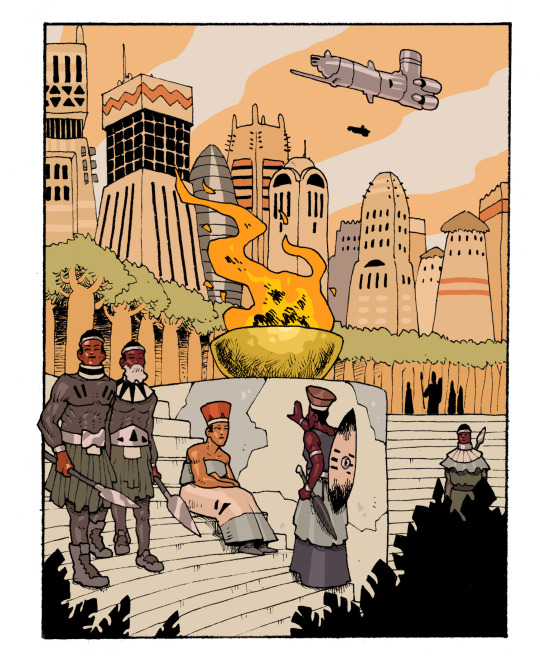
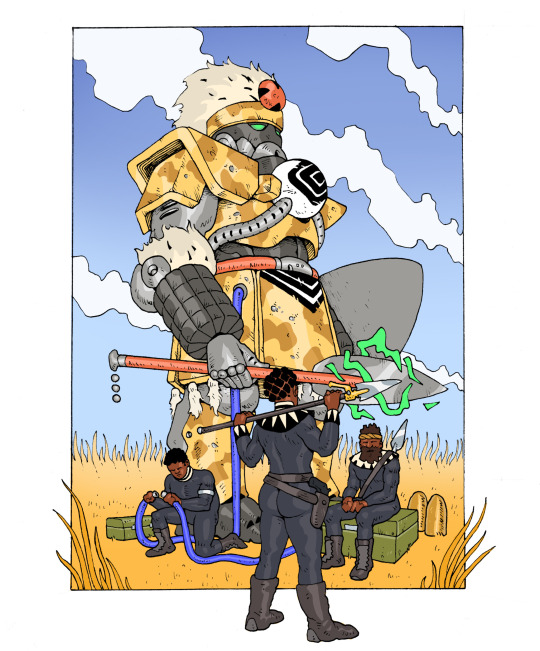
Our Vale of Discontent was a small game I worked on in 2020:
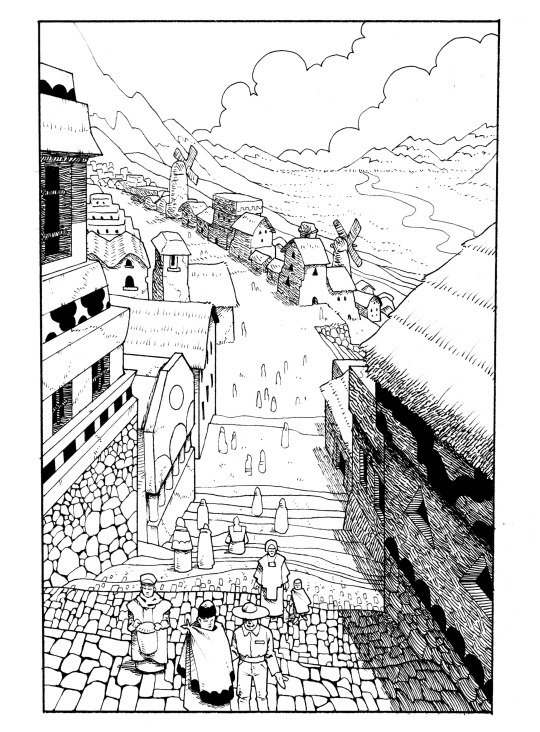
Mycosis is a Mork Borg dungeon I worked on around this time, which notably marked my first attempt at doing some goofy black metal title font.
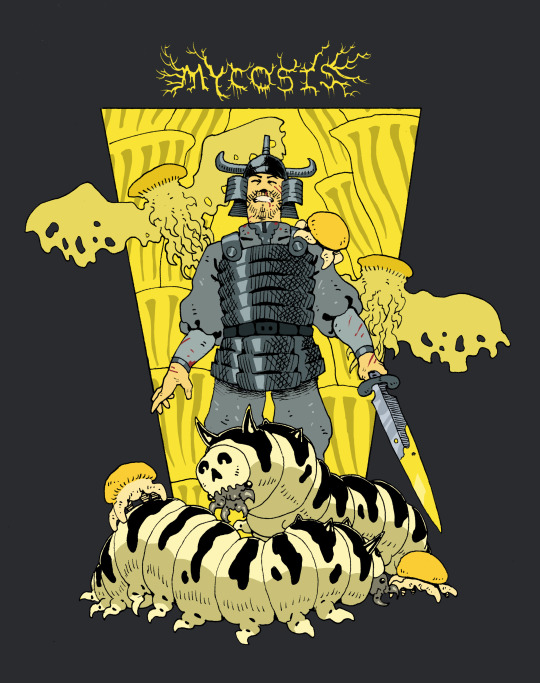

I did most of my illustration work for Desert Moon of Karth by Joel Hines in late 2020 and early 2021:
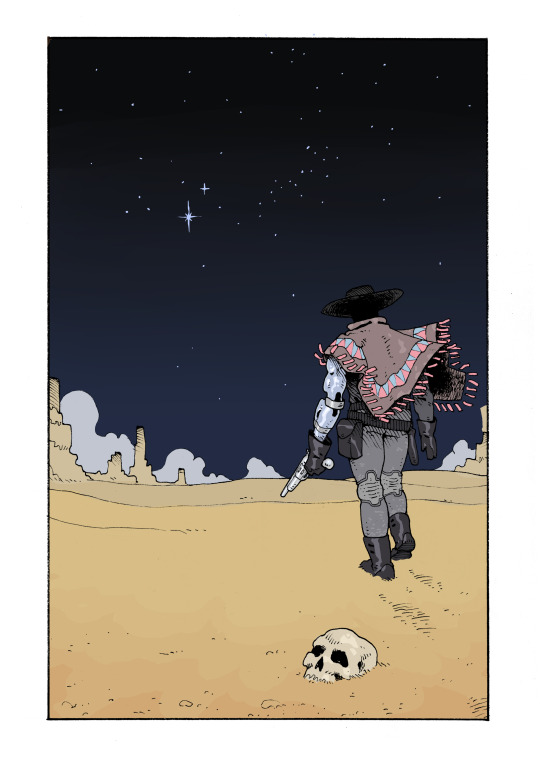
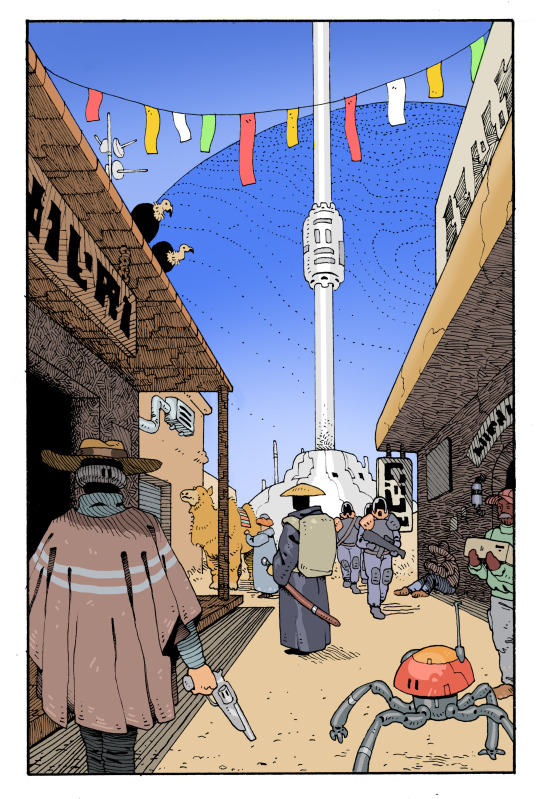
The sequel, Tide World of Mani is still being worked on. I just finished my last interior illustrations for it a month or two ago.
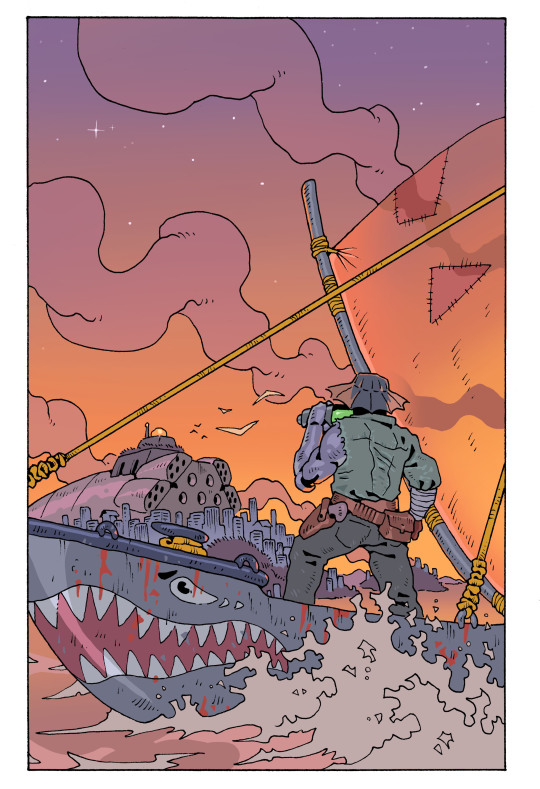
AZAG by Dank Dungeons was a game I worked on throughout 2021 that was a blast and I think more people should know about.
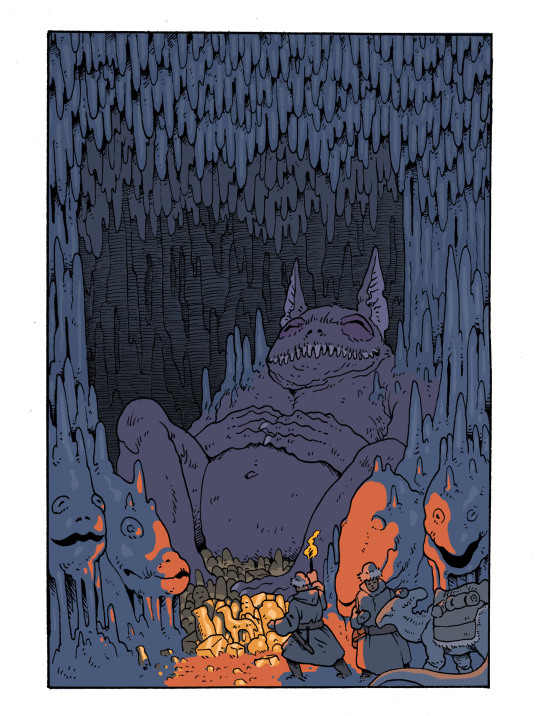
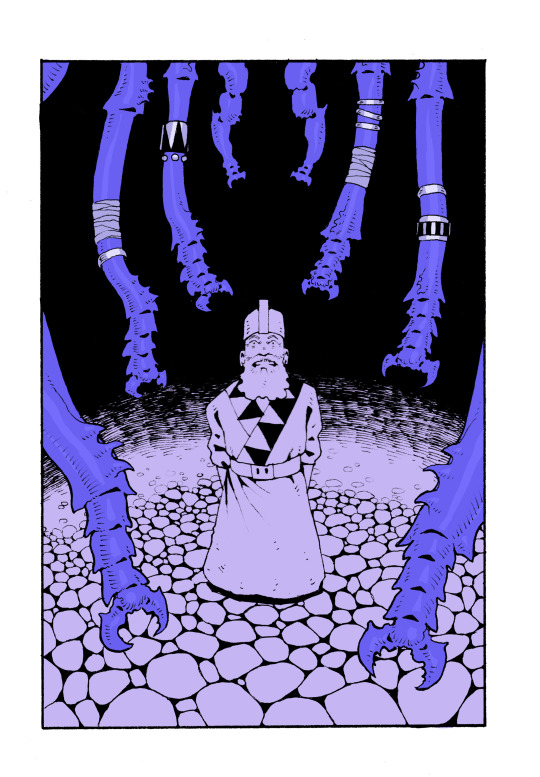
At some point in 2021 I did a bunch of pieces for Lore & Legacy although I don't remember exactly when. These never got posted but the book's been out for a while now so maybe I'll show them off later.

Late in 2021 was when I started doing illustrations for The Electrum Archive by Emiel Boven (I think issue 2 is out soon).
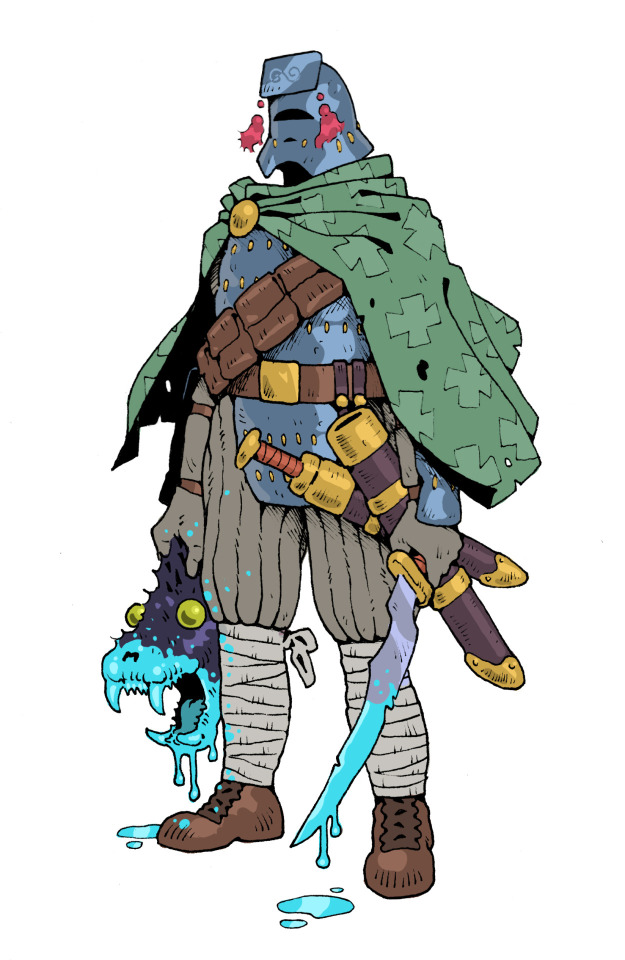
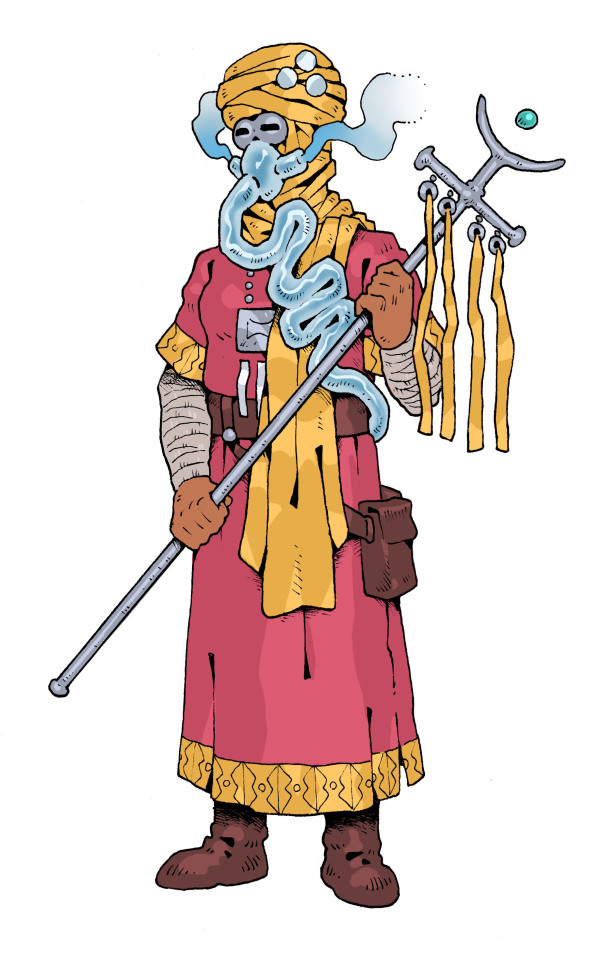
Early 2022 I did a bunch of character illustrations for some Victorian horror fantasy game that I don't think ever actually came out (commissioner never responded to me when I asked about it at least) which is a shame because I'm proud of these. At least I got paid!

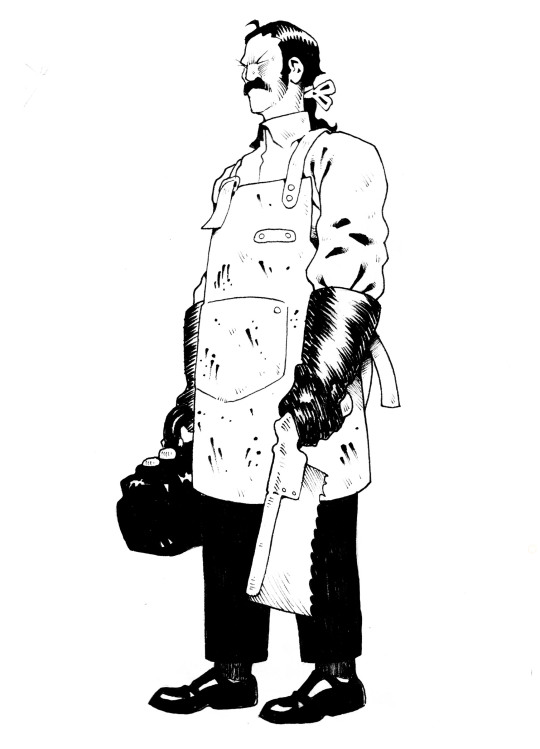
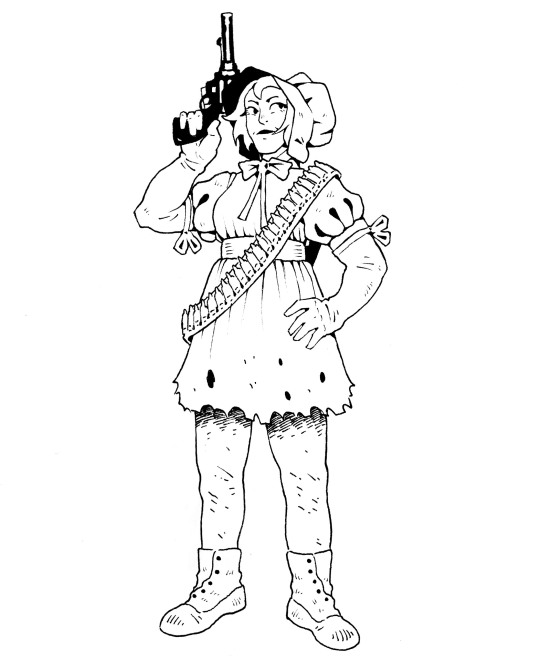

This was another one for a game that I don't think ever came out:

I did character designs for Nebula Chaos by Polyhedra Games in 2022:
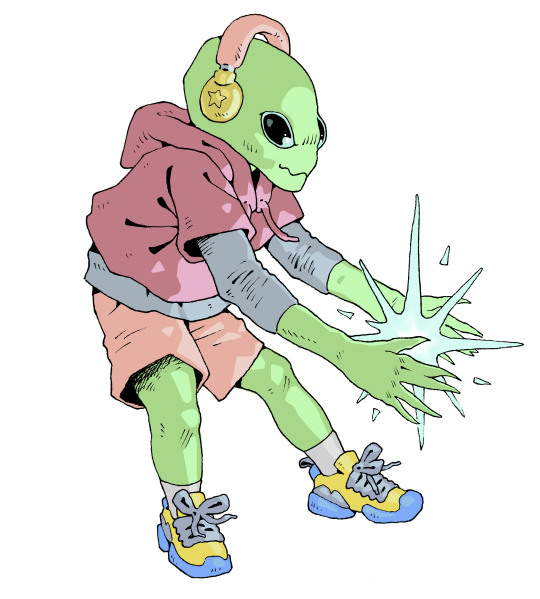

Then Neon Saber by Olivia Miller
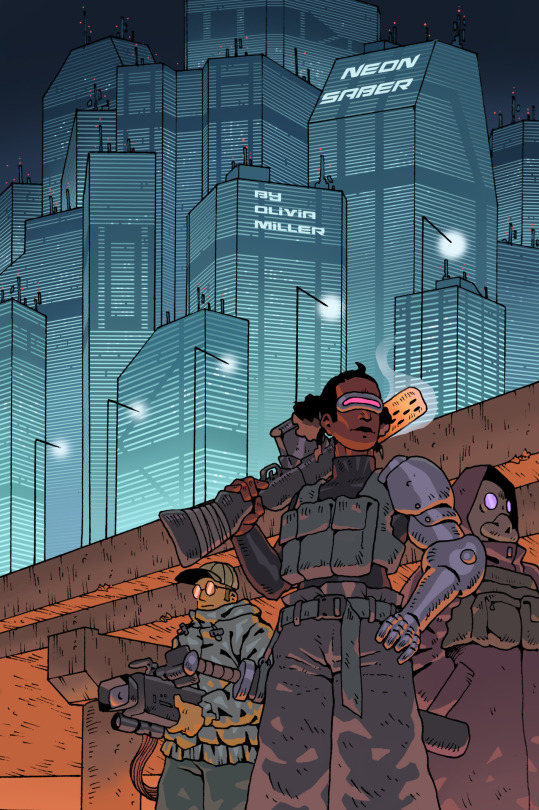
Then some pieces for If Worlds Collide:
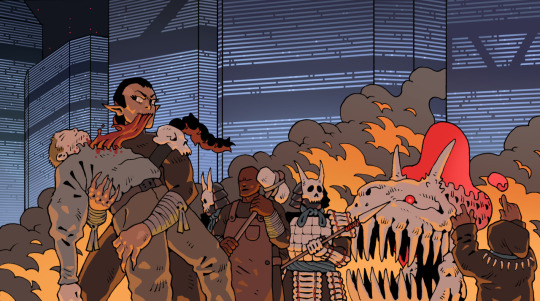
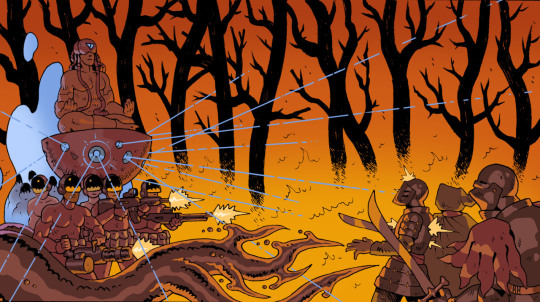
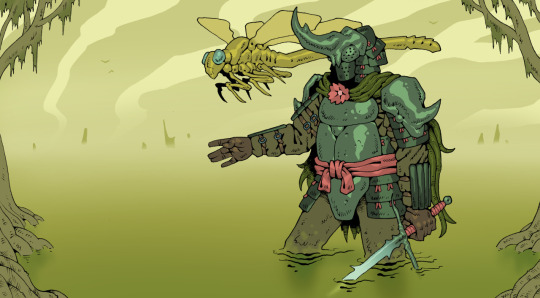
Then Critters & Companions by Pearse Anderson:
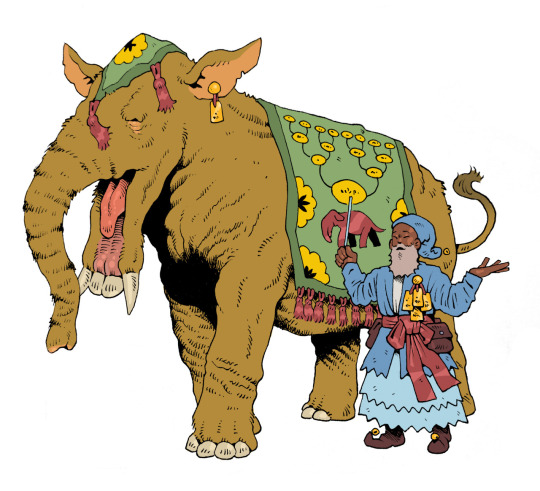

Ran out of space for images, I'll finish this in part 2...
517 notes
·
View notes
Note
Hi, i just learned about the scientific revolution in europe at school. Can you tell me why you dont think scientific revolutions exist? im curious!
So I feel like I have to lead with the fact that I'm kind of arguing two different points when I say scientific revolutions aren't really a thing
One is that I'm objecting to a specific, extremely foundational theory of scientific revolutions that was put forth by the philosopher Thomas Kuhn, which I think really misrepresents how science is actually practiced in the name of fitting things to a nice model. The other is that I think the fundamental problem with the idea is that it's too vague to effectively describe an actual process that happens.
It's certainly true that there are important advances in science that get referred to as "revolutions" that fundamentally changed their fields -- the shift from the Ptolemaic model of the Solar System to the Copernican one, Darwin's theory of evolution, etc. But there are historians of science (who I tend to agree with) that feel that terming these advances "revolutions" ignores the fact that science is an continuous, accretional process, and somewhat sensationalizes the process of scientific change in the name of celebrating particular scientists or theories over others.
Kuhn's model that he put forth in The Structure of Scientific Revolutions (which is one of those books that itself stirred a great deal of activity in a number of fields) suggests science evolves via what he called "paradigm shifts," where new ideas become fundamentally incompatible with the old model or way of doing things, causing a total overturn in the way scientists see the world, and establishing a new paradigm -- which will eventually cave to another when it, too, ceases to function effectively as a model. This theory became extraordinarily popular when it was published, but it's somewhat telling who it's remained popular with. Economists, political scientists, and literary theorists still use Kuhn, but historians of science, in my experience at least, see his work as historically significant but incompatible with how history is actually studied.
Kuhn posits that between paradigm shifts there are periods of "normal science" where paradigms are unquestioned and anomalies in the current model are largely ignored, until they reach a critical mass and cause a scientific revolution. In reality though, there is often real discussion of those anomalies, and I think the scientific process is not nearly so content to ignore them as Kuhn thinks. Throughout history, we see people expressing a real discontent with unsolved mysteries the current scientific model fails to explain, and glossing over those simply because the individuals in question didn't manage to formulate breakthrough theories to "solve" those problems props up the somewhat infamous "great men" model of history of science, where we focus only on the most famous people in the field as significant instead of acknowledging that science is a social enterprise and no research happens in a vacuum!
Beyond disagreeing with Kuhn specifically though, I think the idea of scientific revolutions vastly simplifies how science evolves and changes, and is ultimately a really ahistorical way of thinking about shifts in thinking. Take the example of the shift from Ptolemaic, geocentric thought to the heliocentric Copernican model of the solar system. When does this supposed "revolution" in thought actually start, and when does it "end" by becoming firmly established? You could argue that the publication of Copernicus' De revolutionibus orbium coelestium in 1543 was the beginning of the shift in thinking -- but of course, then you have the problem of asking where Copernicus' ideas came from in the first place.
The "great men" model of history would suggest Copernicus was a uniquely talented individual who managed to suggest something no one else had ever put forth, but realistically, he was influenced by the scientists who came before him, just like anyone else. There were real objections to the Ptolemaic model during the medieval era! One of the most famous problems in medieval astronomy was the fact that assuming a geocentric model makes the behavior of the planets seem really weird to an observer on Earth, referred to as retrograde motion, which had to be solved with a complicated system of epicycles that people knew wasn't quite working, even if they weren't able to put together exactly why. There were even ancient Greek astronomers who suggested that the sun was at the center of the solar system, going all the way back to Aristarchus of Samos who lived from around 310-230 BCE!
Putting an end point to the Copernican revolution poses similar challenges. Some people opt to suggest that what Copernicus started, either Galileo or Newton finished (which in and of itself means the "revolution" lasted around 100-150 years), but are we defining the shift in terms of new theories, or the consensus of the scientific community? The latter is much harder to pinpoint, and in my opinion as an aspiring historian of science, also much more important. Again, science doesn't happen in a vacuum. Copernicus, Galileo, and Newton may be more famous than their peers, but that doesn't mean the rest of the Renaissance scientific community didn't matter.
Ultimately it's a matter of simple models like Kuhn's (or other definitions of scientific revolutions) being insufficient to explain the complexity of history. Both because science is a complex endeavor, and because it isn't independent from the rest of history. Sure, it's genuinely amazing to consider that Copernicus' De revolutionibus orbium coelestium and the anatomist Andreas Vesalius' similarly influential De humani corporis fabrica were published the same year, and it says something about the intellectual climate of the time. But does it say something about science only, or is it also worth remembering that the introduction of typographic printing a century prior drastically changed how scientists communicated and whose ideas stuck and were remembered? On a similar note, we credit Darwin with suggesting the theory of evolution (and I could write a similarly long response just on the many, many influences in geology and biology both that went into his formulation of said theory), but what does it say that Alfred Russel Wallace independently came up with the theory of natural selection around the same time? Is it sheer coincidence, or does it have more to do with conversations that were already happening in the scientific community both men belonged to that predated the publication of the Origin?
I think that the concept of scientific revolutions is an important part of the history of the history of science, and has its place when talking about how we conceive of certain periods of history. But I'm a skeptic of it being a particularly accurate model, largely on the grounds of objecting to the "great men" model of history and the idea that shifts in thinking can be boiled down to a few important names and dates.
There's a famous Isaac Newton quote (which, fittingly, did not originate with Newton himself, but can be traced back even further to several medieval thinkers) in which he states "If I have seen further it is by standing on the shoulders of Giants." I would argue that science, as an endeavor, is far more like standing on the shoulder of several hundred thousand other people in a trenchcoat. This social element of research is exactly why it's so hard to pull apart any one particular revolution, even when fairly revolutionary theories change the direction of the research that's happening. Ideas belong to a long evolutionary chain, and even if it occasionally goes through periods of punctuated equilibrium, dividing that history into periods of revolution and stagnancy ignores the rich scientific tradition of the "in-between" periods, and the contributions of scientists who never became famous for their work.
#SORRY FOR WRITING A NOVEL#i hope this makes sense and that i am not too deep in the history of science theory to give a good explanation#a much shorter tl;dr answer would be that my stance towards scientific revolutions is more skepticism than total rejection#but hyperbole gets the job done a lot faster haha#getting to the point that i really should have a#history of science tag
368 notes
·
View notes
Text
JSTOR Daily offers a profound exploration of Chicanx, a term historically associated with Mexican Americans, through a meticulously curated reading list. This collection begins by analyzing the construction of race for Mexican descendants in the U.S., highlighting how institutional racial constructs led to discrimination and overshadowed the diverse Indigenous, Black, and European ancestries. The list includes pivotal works from the Chicano Movement of the 1960s and 1970s, focusing on activism against historical injustices in education, policing, and housing.
Central to this collection is Chicana Feminism, which expanded the conversation to include intersectional views on race, gender, and sexuality. This shift mirrors the evolution of Chicanx identity, from a cultural marker to a political identity encompassing various racial and ethnic backgrounds.
Concluding with the latest interdisciplinary studies in Chicanx, the list showcases recent research on LGBTQ+ experiences and issues shared by Mexican and Central American communities. This evolution in the field is exemplified by changes in academic departments, like the renaming of the UCLA César E. Chávez Department to include Central American Studies. JSTOR Daily invites readers to a scholarly journey through the dynamic history and identity of the Chicanx community with this comprehensive reading list.
#jstor#jstor daily#reading list#chicanx studies#central american studies#mexican studies#chicana feminism
151 notes
·
View notes
Text

☕️Soul Story with Your Divine Counterpart ♦︎ Timeless Pick A Card
A long, long, long time ago, in the harmonic realms of Pure Bliss, there was nothing but Dharma. Bored as whoa from a lack of strife, our Souls began to yearn for Drama. In the theatre of the Universe, Game Masters joined forces to create the most hyper-realistic Game of Polarity—of opposites and contrasts. We were told, we would understand Unity better if we could master Duality.
Divine Pairs were invited for the launch of the Game as the unbreakable bond between them was deemed the most powerful, enough to withstand the chaotic nature of Duality and Polarity. In time, we all jumped into the Game expecting all kinds of immersive experiences of playing knaves and heroes, destroyers and builders, enemies and lovers, et cetera, et cetera.
In the beginning, we played amongst many of our own Kind but eventually met those from other harmonics who had later been invited to the Game, too. In a world of illusions… we were dreaming all kinds of events and adventures with our cosmic avatars, and in time, all kinds of storylines intertwined to weave an even bigger cosmic narrative.
We all played for so long we were beginning to forget our true form. Many of us could no longer recognise each other’s Divine Counterparts. A multitude of shape-shifting had caused a distortion in reconnecting to our Original Memory. The game world had now become a second Reality.
🎧Alone Again, Wonderful World by Plastic Tree
🎧I Love You by Off Course
[PAC Masterlist] [Part 1] [Part 3]
[Patreon] [Paid Readings]
☆♪°・. ☆♪°・. ☆♪°・. ☆♪°・. ☆♪°・. ☆♪°・.
There is a super special behind-the-story for this PAC on Patreon. If you’re already subscribed, don’t forget to check the full post ^o^v
☆♪°・. ☆♪°・. ☆♪°・. ☆♪°・. ☆♪°・. ☆♪°・.
Pile 1 – Finally, Happily Ever After with You♥︎
MOVIE: Howl’s Moving Castle (2004)

your Home World – Page of Swords
I have a feeling your Home World (at least one of them that is significant in your current stage of soul evolution) was a relatively new world. You’ve come from a civilisation that prized intellectual pursuits more than anything. Your Kind loved to study; you enjoyed improving your environment and society. Researching plants—understanding them and making chemicals and potions with them—was a pastime of your people. You were working to understand your Planet.
Your Home World had many large, expansive libraries of all the things your people had come to learn. Many people loved to visit the library and read and just have fun studying. You were such big-brained folks. There was no school like we know on Earth. There were academies and laboratories for children to partake in research and new inventions. The weather on your Home World was always pleasantly sunny and you could see buildings that are similar to hot houses on Earth. There were gardens and open fields, of course. Vegs and herbs were your main interest and food was aplenty.
People had roles in society but nobody had any semblance of a concept of what we call ‘jobs’ on Earth. People didn’t work for money. People lived with the joy of knowing that they were alive and that the Planet had provided for them. Your people loved the Planet so much—you appreciated and cherished this new world you were beginning to understand. But… this also meant you didn’t have any concept of conflict, power struggle, and war… You didn’t have a military—never crossed your mind the necessity for such a thing.
And so, when warmongering space invaders attacked your Home World you couldn’t protect yourself.
a promise before birth – 4 of Swords Rx
From the moment the space invaders arrived, it was clear that there was no way your civilisation could stand a chance against the enemy’s warships. The imbalance of military power was too overbearing. You didn’t even have an army, not even a fighter. All you could do was try your best to evacuate your people and escape the Planet. Homes and gardens were destroyed and families were torn apart. Friends and lovers calling out names of lost loved ones. Sisters and mothers shielding children and escaping. Brothers and fathers staying behind to buy time.
This horror was etched in your Soul Memory for a long time. Your heartbreak became a default setting when you chose to be born on Earth. As if, you’d forgotten how it feels like to have peace. But you craved it from the deepest unseen well of your subconscious, and at one point in your soul evolution, you prayed to Infinite Intelligence. You prayed that you could be saved from the looping horror of being trapped in the same scenario of sorrows. You had come to resent the Game.
‘Please, salvage my heart from betrayals, isolation and loneliness.’ Infinite Intelligence heard your plea and whispered: ‘If you could remember your Divine Counterpart, they will remember you, too, and you will be calling out for one another. If you could remember your true form, you will remember what your Divine Counterpart feels (looks) like. And all will be fine in all of the worlds again when you meet.’ And you fell back into slumber to find yourself awake on Earth.
finding each other – 5 of Swords Rx
Earth is a world that is just as war-torn as your Home World, if not a lot worse out here. Being born into a world so reminiscent of all your traumas, navigating Life here has not been easy. As if Infinite Intelligence had played a cruel joke on you. But the truth is, Earth is the perfect place for you right now because by being here you resolve your traumas a lot faster than if you had been born somewhere comparatively better. You are in the midst of recovering from bad dreams of lives lost in wars.
Did it cross your mind that your Divine Counterpart has also been doing the same? You’re not alone. You’re working really hard to purify yourself from all of these bad dreams, bad memories, all so you wouldn’t mistakenly destroy each other when you meet. Infinite Intelligence had arranged for you to face your traumas head on so you wouldn’t have to show your ugly healing to each other. That scenario isn’t for you. Isn’t it so graceful?
Although it’s hard to face your challenges feeling like you’re all alone in the wild wide world, trust me, it’s better to have those quarrels and separations with people who mean little. I can hear a soft voice from the aether saying: ‘You’re… the only reason I’m still breathing… We will meet. When I’m good, I can make everything in your world good!’ So confident. So loving, indeed.
TURNING THE PAGES🔻💜
story behind your Union – Gold Physician (Hippocrates)
the rest of your days – Priestess of Ambition
Access full reading + cards on Patreon🌸
☆♪°・. ☆♪°・. ☆♪°・. ☆♪°・. ☆♪°・. ☆♪°・.
Pile 2 – True Calm That Comes Only After the Storms
MOVIE: Grave of the Fireflies & My Neighbor Totoro (both 1988)

your Home World – 8 of Cups
Quite similar to Pile 1, you still carry deep sadness and heavy regrets in your heart that are, truthfully, only remnants of memories from your Home World. Your Home World was quite advanced technologically. Your civilisation depended on the Masculine energy—Yang energy. Societies were run on varying degrees of strictness but the modus operandi was clear: the masculine form and structural ways of running things were favoured.
Obviously, not everybody was happy about that though for a long time, peace was maintained. However, influences from visitors and ambassadors from other civilisations (by comparison they were freer; more fluid) eventually seeped into the consciousness of the main populace, and in time, underground rebellion groups were formed. These alliances were made amongst multiple races of beings that felt they weren’t accepted (or respected enough) by the main races.
Friction began to tear apart the establishment and government officials tried their utmost to crack down dissents. Many went to prison or got killed in the numerous conflicts that were becoming a plague in your Home World. In a last attempt to preserve the codes of freedom, many elders told their young warriors to flee and find refuge in other Worlds that were, hopefully, more balanced in their operation of Yin and Yang.
a promise before birth – 3 of Cups
You left your Home World carrying a promise to come back and make everything better after you’ve learnt enough about the ways of other Worlds. Tears were inevitable but the determination in your heart was solid. You were a new legion of Ambassadors from your own Home World. You didn’t really want to think of yourselves as refugees, after all, many of your Soul Family members were still living alright in your Home World though things were just… a little too unpleasantly unjust.
When you departed your Home World, you created a mirror image of yourself to accompany you across the Multiverse—a divinely ordained Counterpart. This was possible by the grace of the Infinite Intelligence, of course. In the beginning, you went to the same places and learnt similar things. Over time, your understanding of each other’s capabilities became clearer and, with confidence, you decided you would travel separately from now on.
You had this unbreakable bond and an immense capacity for telepathy, so you weren’t the slightest bit worried about losing contact with your Counterpart. You believed that it would be just as easy to call upon each other and reunite as you deemed fit. Alas, your travels brought you to Earth, finally, and things over here were just… slightly over-the-top chaotic for even you to handle. The level of evil on this new World was… NEXT LEVEL.
finding each other – 7 of Pentacles Rx
Crash landing on Earth! Coming here felt like a major accident. Your whole world upside down. The reason being something related to betrayal trauma. To find a World that’s even more polarised than your own; to see a World that operates on the highest level of toxic masculinity; to be in a World this corrupted by its own leaders; needless to say the whole being born thing was traumatising.
The shocks of being born on Earth made it difficult to reconnect with the essence of who you are on a Soul level. Thus you forgot how to contact your Divine Counterpart. You’ve felt like you have so little guidance living Life on Earth. But deep in your psyche, you’ve always known you’re here for something greater than the mundane. You know you don’t belong to this Earth. You’re here on a mission. You want to build something with someone… Someone dear, but you can’t remember.
Can you believe that you and your Divine Counterpart are meant to inspire the dissolution of anger? Yes, this World so deep in the clutches of aggression. You are special Souls who have been ordained to meet on Earth when the time is right to help inspire peace—after all, it is what you seek and Infinite Intelligence is arranging every couple’s rendezvous in the most magnificently mysterious ways. I think your finding each other is just gonna happen naturally by virtue of matching vibrations. So~ Keep focusing on your Life’s mission and just like that~ BOOM! There they are.
TURNING THE PAGES🔻💚
story behind your Union – Green Historian (Herodotus)
the rest of your days – Priestess of Inspiration
Access full reading + cards on Patreon🌸
☆♪°・. ☆♪°・. ☆♪°・. ☆♪°・. ☆♪°・. ☆♪°・.
Pile 3 – ‘Kiss You Better; I’m Your Only Other’
MOVIE: Princess Mononoke (1997)

your Home World – 6 of Wands
The Home World that’s currently significant in your soul evolution was a world of glory and magnificence. Your Home World looked nothing like what we know of abundance and celebration on Earth; it was such a rich and happy World. It emanated so much pink, gold, blue, turquoise and soft violet. Back in your Home World, people didn’t even look… humanoid, per se. Your Home World was… fluid. It was a different type of consciousness. Life itself was fluid. Existence was simply flowing with the sweet symphony of the Cosmos.
Your Home World operated on the basis of Love. People were very kind and jolly most of the time. Your people didn’t really understand this whole concept of non-Love. Suffering and terror… what the heck are those? Manipulation and lies… for what? Taking advantage of someone else, murder and theft… but… why? All of those concepts were so foreign yet so fascinating to your people.
When you heard that Earth needed some high-vibe volunteers to ‘raise her vibrations’, actually, not that many people from your Home World were interested LMAO The risks of being separated and forgetting Love sounded not worth a good dime. Your World was so peaceful, loving and fulfilling. But the call from Earth felt a little too urgent! So… Some curious and courageous Souls finally decided to take a test drive. Just a preview. It couldn’t be that bad, you thought.
a promise before birth – King of Wands
With gleeful optimism, you promised people back Home that you would be back with grand stories! Off you and your Soul Mates went to a big academy (on another World) to study and prepare for a reincarnation on Earth. Yup, unlike the other Piles in which they couldn’t help but arrive on Earth, you chose to come here out of genuine curiosity. You were expecting dramatic fun!
You and your Divine Counterpart were giggling with anticipation as you prepared yourselves to dive into the Earth Matrix. You and your Divine Counterpart are powerful Souls; you were confident this Game would be between easy to medium difficulty, although you had been told Earth Game’s level of easy is the equivalent of extra hard anywhere else! Your optimism deafened you to that piece of information🤷🏻♀️
You kissed your Divine Counterpart and said, ‘I love you. Let’s find each other quickly in this Game. Let’s have fun and then go back to tell everyone what we’ve seen! It’ll be great!’ Your Divine Counterpart nodded in agreement and waved to all members of your Soul Family and they did the same. With great determination to serve your collective consciousness back Home, you dove into the illusions of Life on Earth🌎
finding each other – 5 of Pentacles
Arriving here, from the moment you were born as a child the world was already chaos. The reality of Earth was too shocking to bear alone. Who would’ve thought the density of Earth would cause you this much pain? Physically, emotionally, psychologically, spiritually, everythingally. You thought, ‘Damn, my training at the academy told me nothing, NOTHING, of this!’ Literally you didn’t expect Earth’s negative polarisation would be THIS fucked up.
For you’ve come from a world of nothing but Love, Life on Earth was soul-shattering to say the least. Many moments you’ve thought it impossible to go back to the frequencies of Love and you became dejected as fuck. But you’ve only forgotten that YOU are Love. You carry the memories of all your collective consciousness that supports your coming here. As long as you tap into this Love deep within yourself, so shall you be reconnected to the essence of who you are on a profound Soul level. There, as well, you will feel the heartbeat of your Divine Counterpart.
For you’ve come from Love, it’s as if your Divine Counterpart had left a piece of their Heart in yours so you never feel alone. You are both a complete whole carrying a piece of each other’s essence everywhere you go—a perfect personification of the Yin-Yang symbolism. You are literally inseparable and have never truly been separated. A piece of your Heart in theirs is always reminding them of their ultimate goal in this incarnation: to find each other, weave stories together, and infuse a piece of yourselves into the collective conscious of Mankind as a token of gratitude—for all the experiences.
TURNING THE PAGES🔻���
story behind your Union – Red Astronomer (Johannes Kepler)
the rest of your days – Priestess of Illumination
Access full reading + cards on Patreon🌸
☆♪°・. ☆♪°・. ☆♪°・. ☆♪°・. ☆♪°・. ☆♪°・.
[PAC Masterlist] [Part 1] [Part 3]
[Patreon] [Paid Readings]
#Punk Panda Pick A Pic#pick a card#tarot pick a card#pick a card reading#pac#tarot pac#pac reading#future spouse#tarot future spouse#astroblr#tarotblr#writblr#witchblr#witchythings#soulmate#divine counterpart#desired reality#lightworker#starseed#girlblogger#girlblogging
529 notes
·
View notes
Text
DARK MATTER DOESN'T EXIST IN OUR UNIVERSE??
Blog#387
Wednesday, March 27th, 2024.
Welcome back,
The composition of the universe, as we currently understand it, is thought to comprise 'normal matter,' 'dark energy,' and 'dark matter.' However, a recent study from the University of Ottawa sheds new light on this notion, suggesting that dark matter might not actually be a necessary component.

Dark matter is a term used in cosmology to describe entities that don't interact with light or the electromagnetic field, and can only be inferred through gravitational effects. Essentially, it's invisible and its composition remains a mystery, yet it plays a crucial role in our comprehension of the behavior of galaxies, planets, and stars.

Professor Rajendra Gupta, from the Faculty of Science at the University of Ottawa, conducted this groundbreaking study. He utilized a blend of the covarying coupling constants (CCC) and "tired light" (TL) theories, amalgamating them into what's termed the CCC+TL model.
This model proposes that the forces of nature diminish over cosmic time and that light loses energy during its extensive travels.

Gupta's model has been rigorously tested against various observations, including the distribution of galaxies and the evolution of light from the early universe.
This study challenges the prevailing understanding of the universe, which posits that approximately 27% of its composition consists of dark matter, with less than 5% being ordinary matter, leaving the rest attributed to dark energy.

Gupta said, "The findings from our study affirm our prior research on the age of the universe, which concluded it to be approximately 26.7 billion years old, and demonstrate that the universe may not necessitate the presence of dark matter."
He further explains that while standard cosmology attributes the accelerated expansion of the universe to dark energy, it is actually the weakening of natural forces as the universe expands that drives this phenomenon, not dark energy.

The concept of "redshifts" plays a pivotal role in this study. Redshifts occur when light shifts towards the red end of the spectrum. Gupta scrutinized data from recent papers on galaxy distribution at low redshifts and the angular size of the sound horizon from literature at high redshifts.
Originally published on www.thebrighterside.news
COMING UP!!
(Saturday, March 30th, 2024)
"IS THERE GRAVITY IN SPACE??"
#astronomy#outer space#alternate universe#astrophysics#universe#spacecraft#white universe#space#parallel universe#astrophotography
104 notes
·
View notes
Text
I actually find the topic of "Nomura's evolving art style as he takes on more and more responsibility at Square (and subsequently has less time to Do Stuff)" really fascinating.
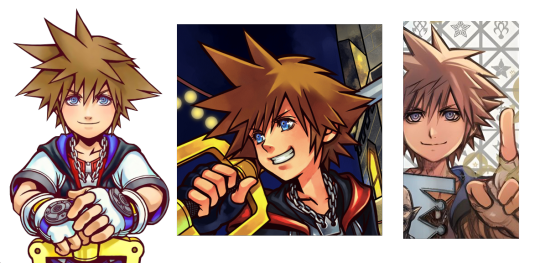
Like, If you compare his art from the KH1-DDD era to his current day art, I think there's a noticable difference to his approach: how many steps there are in his art process, how he chooses to finish a piece, and the shift from a clean digital style to a more organic traditional one.
He used to use very clean, black lineart; bold colors; and more instances of defined/hard shading for that digital, almost cell-shaded or vector kinda look. Nowadays he goes for a more sketchy + watercolor style with pencil lineart, broad washes of faded color, and color shading that's a bit more blended and simplified in places (relying more on the pencil shading to create distinct shadows), with the hard edges more often reserved for scattered, bright highlights. (He's made art like this in the past eras too, such as the KH main menu arts which all have a watercolor quality to them, but the lineart was a bit more defined then and less sketchy, and thus slightly different from his current stuff.)
I think the Dark Road key art is a very good example of his current art style. The sketchy, almost brown lineart. The watercolor quality that emerges where two colors meet and overlap. A little desaturated and earthy. Color shading that's very broad, soft, and loose, with sharp highlights here and there.
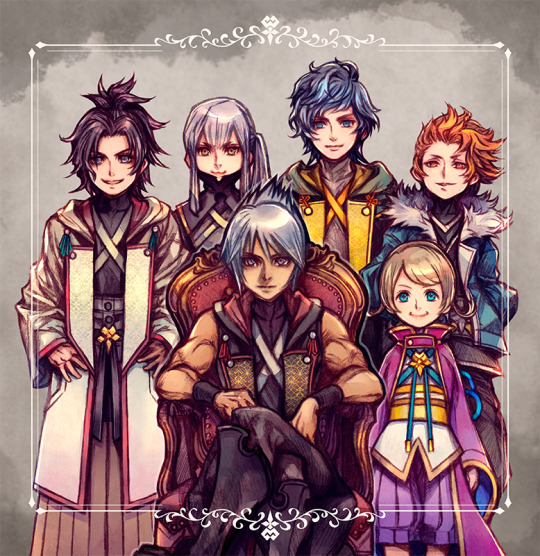
Both styles have their merits (I personally love this sketchy era of his), but I think it's pretty likely that he adopted this as his "main" art style in order to adapt to time crunch. He doesn't need to do time-consuming lineart and precise shading anymore; he can use the original sketch as the lineart instead. Heck, he can fill in a bunch of the shading via pencil during this sketching phase to save even more time, and then can paint in a more watercolor-y kind of way that allows him to color in quicker, broader strokes.
And then there's the occasional art mistake that has become a bit more frequent in recent years, by my estimation. Which I imagine, again, is due to running out of time to notice/fix those mistakes. Things like Ephemer's arms being a bit too long in this UX art, the Kingdom Key being slightly off-model in this anniversary art, or the ears on this Mickey Mouse symbol being two different sizes on this Utada album art.


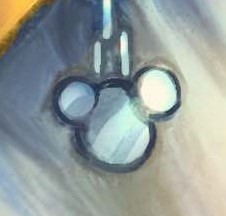
(Which isn't to say that he hasn't made art mistakes in the previous eras, for example he initially got the colors of Riku's shirt mixed up in the Re:CoM cover art before fixing it, but I still think the mistakes were a bit less frequent back then.)
And like, hey. I draw, too. Amatuerishly, but I do. I don't blame Nomura for possibly needing to change his approach to making art in order to meet deadlines, nor do I blame him for these little art mistakes that ended up falling through the cracks. I imagine he simply doesn't have the time anymore now that his job has shifted from (primarily) being a character designer/illustrator to (primarily) being a director of multiple, simultaneous projects. Or maybe I'm totally wrong about this and his art evolution had nothing to do with time crunch, who knows. I think his current art style is gorgeous either way!
Anyway, I just think this is an interesting example of someone taking their art and adapting it to a difficult and highly limiting situation, experimenting with new things and finding the means to still make art even when you have less time to do. Also a great example that professionals are human and will make mistakes even in professional products, and it's not the end of the world, it just happens. If you ever obsess over a mistake in your art...maybe take solace in knowing that it happens to everyone. Even people who have been in their field for a very long time.
49 notes
·
View notes
Text
The Beauty of Subtlety and Change: A Deep Dive [We Are EP. 12]
As more episodes come out every week, I fall more and more in love with this series. I know when the trailer came out, there were some people that we off put by "another university/engineering student" series, or weren't as enthusiastic about the comedy being present in the series, I think that's fair since everyone has their own preferences and qualms with how past series have approached this genre, but I truly believe once people give it a chance and start to watch the further episodes, I start realizing how intentional and well crafted the character development has been with each introduction of a new story arc or group dynamic. Eventually I want to dissect more parts of the series that I resonated with, but the first definitely has to be Tan and Fang's development as the series progresses.
One thing I appreciate about the handling of these two characters, which I continue to give my flowers to Aou and Boom. This is my first time watching them in a series (I was only familiar with Pond and Phuwin from Never Let Me Go, as well as Tee when he played a supporting role in Only Friends), and I instantly fell in love with their on screen characters, but eventually the actors themselves as the series progressed. Both actors do an amazing job portraying the personalities of their characters and their distinct differences between their past and present selves, where the performance is well thought out without being too over the top which is what the sound effects are for hahaha.
In episode 12, the conversation between Tan and Fang caught my attention the most, especially when I rewatched episodes in my free time while waiting for new episodes to drop. When Tan shares his story with the gang about how Fang and him met during episode 9, you wouldn't have even thought both of them would be as hot headed as they were in high school versus how we were introduced to them as university students in the first few episodes.


These exchanges with Fang reflected Tan's past self well: a smart ass, condescending, provoking. I think the juxtaposition between past Tan and present Tan really shows itself when we see how Tan speaks about Fang in private now that they're an established couple: compassionate, attentive, loving. Aou does an amazing job with his microexpressions, saying a lot without saying anything at all.


Episode 9 vs. Episode 12
What was even more of a shock to me was the introduction of Fang's past self, completely opposite of how we were introduced to him in the first few episodes. High school Fang was also just as condescending and hot headed, which was later revealed by Tan that he only punched Fang back to save face on the field with other people around. But can we please address how much of a menace Fang is from that expression alone?




Episode 9
To think that present Fang, someone observant, reliable, and introverted, used to be someone blunt, confrontational and spiteful only reinforced my belief in the evolution of individuals: that a person of their past is in fact, the same person in the present, that not everyone should be tied down to the person they used to be and to make room for the person they're aiming to become. I noticed the shift in their perception of one another when we watch the second half of the flashback after Tan helps Phum and Fang escape an ambush.
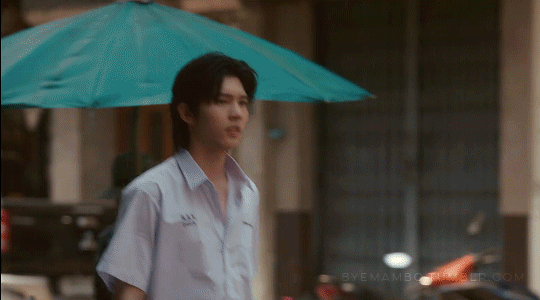



Episode 9
This becomes one of my favorite Tan moments so far (as of episode 12): the defining moment of his innate character as selfless, courageous, and heroic. That despite how Tan felt about Fang after their first encounter and the many other arguments and fights to come, that never crossed Tan's mind when he first witnessed the confrontation: that his natural instinct was to help. He further reinforces this value when Phum asked him why he helped them, Tan answering: "I don't believe in dirty tricks."




Episode 9
After Tan's true character redefines itself in Fang's eyes as this asshole that instigated an argument with him for no reason actually has a heart of gold? We also see this shift in perception between Tan as he witnessed Fang's brotherly nature helping Phum with his injuries, later creating a core memory between the three as both of them let their guards down and mutually accept: "You know, this is all turning out way different than what I expected and...I'm not mad at it." In my humble opinion not that I find helping people/aiding people to be an extremely attractive trait in someone, this planting of the seed that leads up to their own way of flirting and eventually becoming a couple makes sense and as Q says: "You're totally rivals-to-lovers". The ability to protect and help others is a strong trait to have, and this makes sense once Fang begins to open up to Tan about his home life.
When Fang seeks out Tan during episode 12 after seeing his brother and father argue, the best way I could put Fang's complicated feelings into words: survivor's guilt. Fang reaffirms this idea through sharing:
"The moment he returned from abroad, I could still remember the look in his eyes clearly. It has remained my trauma until today."
As someone who identifies with Phum and his upbringing in being the lesser favored child by our parents, having a sibling grow up alongside you being raised by the same-but-different parents is a difficult pill to swallow on both ends, especially as we get older and begin to realize how intense and traumatic that experience can be when we reflect back on childhood, often times manifesting into resentment as we see with Phum and his parents currently in the story. On how real those discrepancies become when intervention and self reflection occurs, on quite frankly, how shitty it is to finally see the ugly truth after disregarding reality or protecting (intentionally or not) those who are the root causes of the pain and suffering.
I resonate with Phum and his journey in learning how to express himself in effective ways that can be heard through the ears of others, even though our childhood made us believe that we're not worthy of bare minimum love and attention, that we're bound to be misunderstood. A lot of Phum's tendencies at the beginning make sense for someone dealing with childhood trauma and abandonment issues cause same here, resulting in isolation, disconnection, and eventually waking up surviving every day instead of living every day. Something I personally battle with in my daily life that I'm sure Phum can relate to: "If my own parents can't support and love me unconditionally, who can and who will? Will I even experience that one day? And if I do, how long will it take until it's taken away from me?" Fang also brings up this same insecurity when opening up to Tan:
"Though I act unreasonable and don't behave well sometimes, if one day you feel you no longer want to be with me, just tell me straight. Because if you disappear, I would be in so much pain."
I'm sure once Fang really understood the effects of Phum's treatment by his parents, his need and "role" to protect and care for Phum intensifies, the conflict between pleasing his parents while also pleasing and helping his brother becomes burdensome to the point where he disregards his own feelings in order to "keep the peace." Although these methods seem rational and effective in the moment, it's only a matter of time before the methods become obsolete and unsustainable, and the foundation built on sticks and desperation to remedy the pain and chaos collapses. Then what finally remains is someone who's scared of the unknown, scared of reentering the same detrimental period of preparing for peace time and war time, someone who regulated themselves through adapting hypervigilance and eventually, general anxiety (as someone diagnosed with anxiety, Fang's moments of overwhelm and "dramatic" all or nothing statements are clear as day to overthinkers), someone who realizes that he can't save everyone, and that's a horrifying feeling to accept once you subject yourself to being the peacemaker.




Episode 12
Being able to see how Tan eases Fang's anxiety (which is well depicted in Boom's acting cause I know that feeling of wanting to be brave and express the truth and trying not to cry through it) was incredibly sweet and became one of my favorite moments the two share. That outside of Tan's go lucky, hyper, and expressive self (who used to be this closed off person that only began really changing once his friends gave him an ultimatum to quit fighting or their friendship ends and poor Peem having to find out the truth of Tan's injuries that wasn't from a bike accident LOL) is an emotionally intelligent, understanding, and aware individual that only wants what's best for his loved ones in the moment. Rather than only hearing Tan's reassurances, which is a result of losing faith in other people and dealing with their lack of credibility in their words versus their actions, we see this during Phum's argument with his father when he double downed:
"I'm paying attention to you now. Everything I've done is for you."
When you hear everything in the book and fail to not only see real action, but accountability and seeking of forgiveness through apologizing is like pulling teeth with some generation of parents, so I truly believe the reaction Phum exhibited was expected. When there's no true understanding of the effects a parent's decision had on a child, there's no foundation put in place to accept and move forward. Skipping steps such as reflection, apologizing, and accountability and getting straight to what you think your child wants is not only disregarding: it's insulting. Given that Phum experienced many iterations of this throughout his childhood, I can only imagine Fang experiencing this secondhand or through witnessing his younger brother dealing with these hardships. When words stop having meaning, the weight of people's words can only hold so much value for individuals that deal with anxious tendencies. In my words: "I need to see it to believe it."
Not only does Tan verbally reassure Fang and telling him not to overthink, he also extends this same sentiment through physical touch. Hand holding, grabbing him by the shoulders, poking his nose, hugging, any moment to be playful with Fang. Growing up with an absent parent usually means an overall lack of physical affection, which can feel unfamiliar or foreign and become even more meaningful to those to express their love and adoration through physical touch, which you can see throughout the scene as Tan's reassurance is calming Fang down and finally bringing him to smile for the first time during their conversation.




For all the people who believed that Fang wasn't showing affection enough for Tan and that he didn't like Tan as much as Tan liked him: I will defend Fang like no other because I identify with him. I'm not one to have a track record on expressing my love for others through physical touch (which doesn't mean I despise it, I just simply forget that's another form of affection I'm allowed to express), which doesn't discount Fang's expression of love and writing him off as unaffectionate simply because Tan has established his primary love language to be physical touch. We see Fang's affection and reciprocation of affection most through quality time and acts of service, such as him allowing Tan to help him with his architecture projects or keeping him company, or Fang trying to reach Tan through phone to see him after a rough time with his professor and ready to beat up whoever upset his babe, or Tan waiting for Fang to finish class for them to go eat dinner together. Fang has also exhibited his love and affection through buying Tan little treats or making him his only mastered recipe spaghetti which Tan will never complain about because it's the thought that counts.
It may not seem as overt and obvious as Tan's expression of love, but we can't deny Fang's love for him that's simply a quieter version of love. Just because it's different, it doesn't make one invalid versus the other, look at his smile from him being around his silly little boyfriend. But as time goes on as these two strengthen their bond as a couple, we can already see how Tan's habits and antics rub off on Fang through playful exchanges. Although Fang is more shy about expressing his feelings, it becomes a beautiful balance of your ideal golden retriever-black cat relationship and a wonderful representation of how successful couples become with candid communication, understanding, and reassurance.

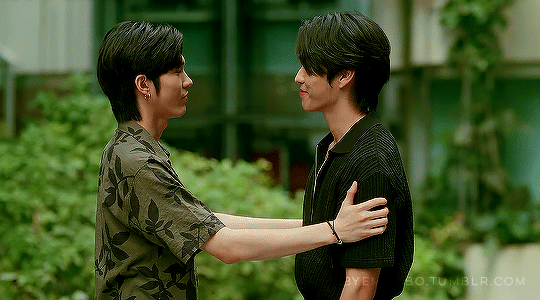




Ok I think I got everything out on the hill I'll die on now, so if you've made it this far, I hope I entertained you enough and left you with from food for thought, but I also appreciate your engagement if you have any thoughts! All is much appreciated <3 As you can see, I'm very normal about this series hehehe
#we are#we are the series#tanfang#aouboom#aou thanaboon#boom tharatorn#thai bl#thai series#bl series#mambo.speaks#it's literally 4am so everyone say thank you to my adhd#i have too many thoughts so have fun with the rest of my long yet detailed posts
59 notes
·
View notes
Text


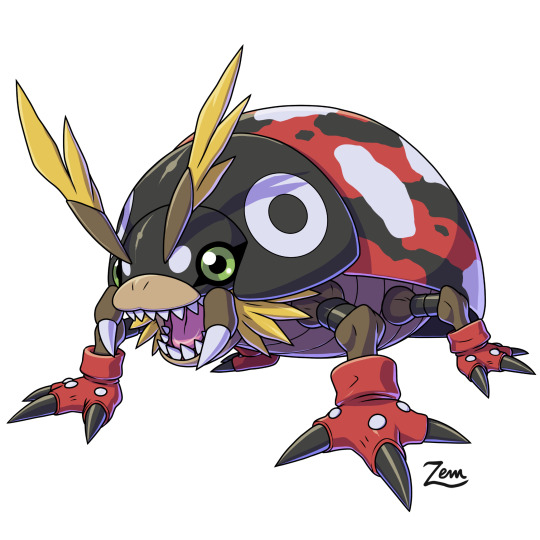


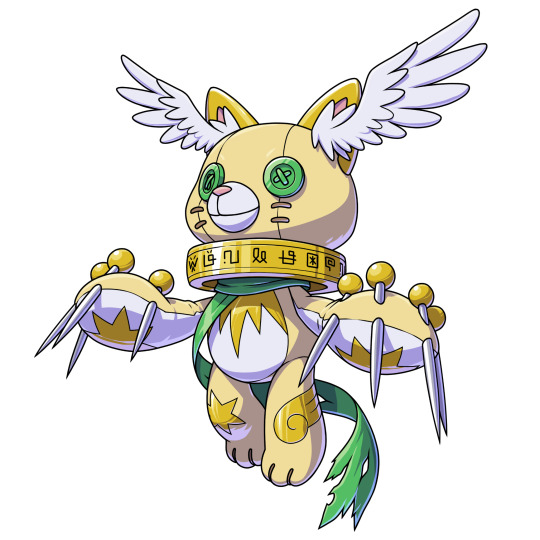


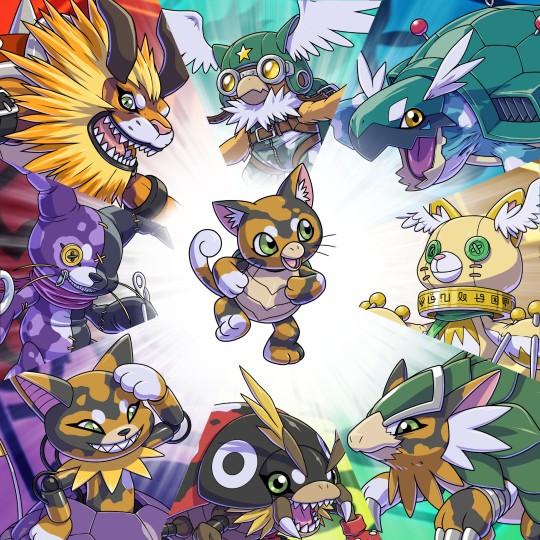
Field shift evolution of tortoiseshellmon! Made by the amazing
@ZebubAl_Zemmons on Twitter
#art#green#gift#commission#thank you#thanks#game#art commisions#sis#for sis#digidestined#digitalart#digital#digital art#digimon#digimon fanart#fake digimon#fakemon#digifake#tortoise cross stitch#tortoisecrossstitch#tortoiseshell#tamer#tamersona#field#field shift evolution#digimon evolution#digimon adventure#digimon oc
276 notes
·
View notes
Text

She gives the orders I give the pleasure
Camille and Marc met at a casual get-together among friends. Both were drawn to the other's genuineness and simplicity. Love blossomed organically between them, and it wasn’t long before they decided to embark on the journey of shared life.
Initially, their relationship followed a more traditional dynamic. Camille handled household duties, while Marc, more often away due to his job, played the role of the primary financial provider. However, as years passed, Camille climbed the rungs in her professional field, emerging as a dominant figure. She possessed not only astute strategic vision but also a knack for balanced and wise decision-making.
On the flip side, Marc began to feel the weight of the constant pressures from his job. He started exploring his passions, notably cooking and the arts. He found immense joy in pampering Camille, surprising her with gourmet meals, and creating a cozy ambiance at home.
One evening, amid a deep discussion about the future and their aspirations, Camille broached the idea of a Female-Led Relationship (FLR). She had never considered it before, but the concept oddly seemed to align with the natural evolution of their relationship. Marc, always open-minded and inquisitive, was keen to explore this dynamic.
The shift wasn’t immediate. They had to navigate through their insecurities, fears, and societal stereotypes. Yet, from their dialogues emerged a mantra: "She gives the orders, I give the pleasure." For Camille, this meant she could lead their relationship drawing from her insight and intuition. For Marc, it indicated an opportunity to discover his strength in delivering joy and comfort to Camille’s life.
Camille found a distinct liberation in this new dynamic. She felt empowered, knowing Marc stood by her, not as a mere follower but as a partner celebrating her lead. Marc, in turn, experienced deep satisfaction in dedicating himself to Camille’s well-being, deriving joy from the minutest details, from romantic surprises to intimate moments shared.
Their friends and family were taken aback by this shift. While some were skeptical, others were in awe. But for Camille and Marc, the FLR dynamic wasn't about a power play but a genuine exploration of individual strengths.
Their story stands as a testament that love doesn’t conform to a single mold. Every couple can define their own dynamic, in tune with their desires, aspirations, and personal growth. For Camille and Marc, "She gives the orders, I give the pleasure" wasn’t just a mantra—it was a reflection of a bond built on mutual respect, trust, and admiration.
She Gives the Orders, I Give the Pleasure: Dynamics of a Female-Led Relationship
In the realm of relationships, myriad dynamics exist. From traditional to modern, every couple establishes a rhythm that harmonizes with their individual personalities. Among these diverse dynamics is the Female-Led Relationship (FLR), where traditional roles are often flipped or rearranged, carving a unique space of mutual respect and understanding. At the heart of this dynamic, you'll often find a mantra of sorts: "She gives the orders, I give the pleasure."
At first glance, this may seem like a simple exchange of roles, but beneath the surface, it is far more intricate.
She Gives the Orders
An FLR is defined not by dominance, but by leadership. The woman in such a relationship takes on the primary decision-making role. This isn't about superiority, but about trust. The man trusts her judgment, her wisdom, and her insight. She may determine the financial strategy of the household, make major life decisions, or even establish certain rules or boundaries in the relationship.
But let's be clear, her role is not about imposing dictatorship. It's about navigating the relationship ship through life's vast ocean, steering clear of tempests and ensuring both reach their desired haven. The man isn’t rendered powerless or voiceless; he has entrusted her with this leadership, finding solace in her capability.
I Give the Pleasure
This is not merely a reference to the physical. Pleasure, in this context, is multifaceted. It refers to emotional, mental, and physical contentment. The man’s primary focus is on ensuring her happiness, her well-being, and her satisfaction. This dedication doesn't diminish him but rather empowers him. His strength is showcased in his ability to cater, understand, and respond to her needs and desires. In doing so, he often finds his own fulfillment.
The pleasure aspect is a symphony of acts - from understanding her emotions, supporting her ambitions, to even those intimate moments shared. It's about creating a space of absolute comfort and ensuring she feels valued, cherished, and adored.
Mutual Growth and Understanding
An FLR, like any other relationship, thrives on mutual respect and understanding. "She gives the orders, I give the pleasure" isn’t about one side having an upper hand. It's about playing to each other's strengths, understanding each other's roles, and growing together as partners.
In society, this dynamic might challenge conventional relationship norms. But love is not confined by convention. It is defined by the people in it and the joy they derive from it. For those in a female-led relationship, this unique dynamic offers a space where both can flourish, guided by trust and mutual admiration.
In conclusion, an FLR is not a challenge to the norms but a testament to the versatility of love and relationships. In a world that continues to evolve, relationships, too, adapt, finding new ways to express love, trust, and commitment.
#gynarchie#matriarchie#femaleledrelationship#gynarchy#matriarchy#femalesupermacy#femaleledworld#keyholder
234 notes
·
View notes
Text
From Myspace to Spotify: The Journey of Indie Sleaze Music in the Digital Age 🌐



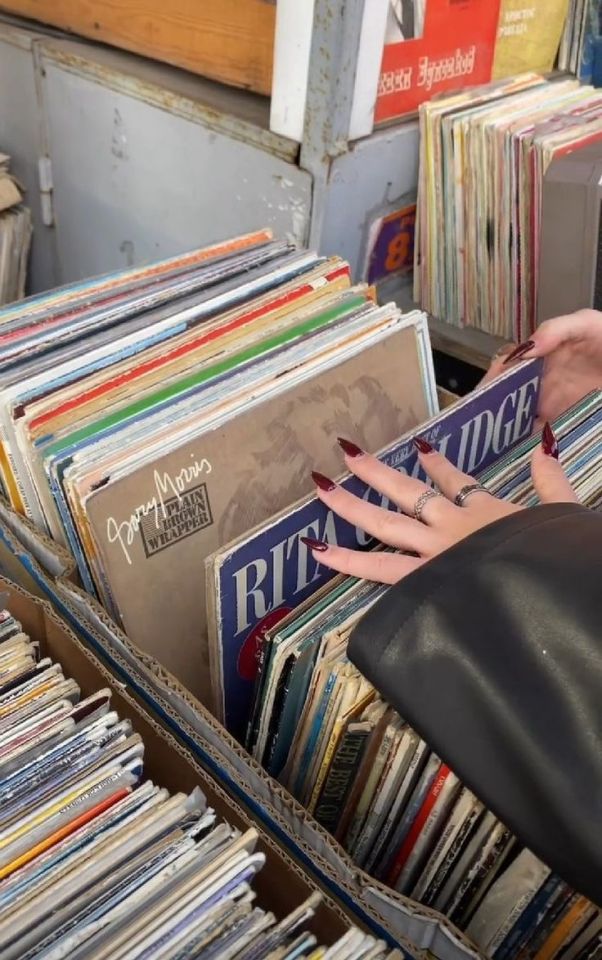

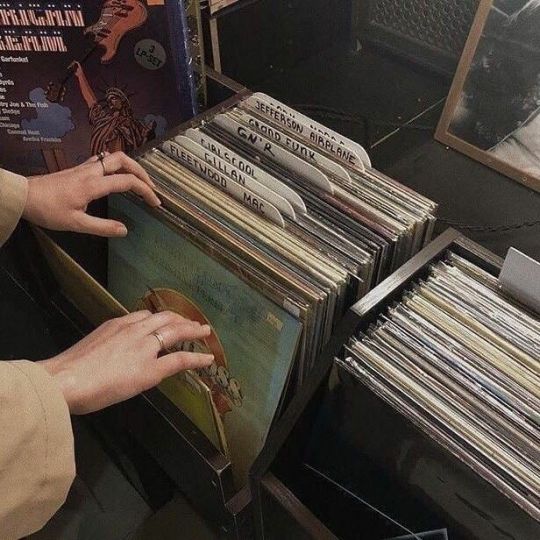
Hey there, indie dreamer! 🎸 Ready for a nostalgic trip through the evolution of indie sleaze music? From the early days of Myspace to the modern streaming era on Spotify, indie sleaze has undergone a wild transformation. Let's dive into how this raw, rebellious genre has adapted and thrived in the digital age, and why it’s still resonating with listeners today.
1. The Myspace Era: Indie Sleaze’s First Digital Playground
Back in the early 2000s, Myspace was the epicenter of indie music discovery. It was the place where bands could upload their tracks, connect with fans, and build a following without needing a major label. Indie sleaze artists were quick to embrace this new digital frontier, using Myspace as their stage and connecting with a global audience in ways that had never been possible before.
DIY Spirit: Myspace was a haven for the DIY ethos that indie sleaze embraced. Bands like The Strokes, Yeah Yeah Yeahs, and Arctic Monkeys used the platform to share their music directly with fans, bypassing traditional media and labels. Their raw, unpolished sound fit perfectly with the unfiltered vibe of Myspace.
Visual Aesthetic: Bands and fans alike used Myspace’s customizable profiles to express their indie sleaze style. With an abundance of glittery backgrounds, band posters, and those iconic “Top 8” friend lists, the platform was a digital reflection of the era’s grungy, glamorous aesthetic.
2. From Downloads to Streams: The Shift to Digital Platforms
As the digital music landscape evolved, so did indie sleaze. The rise of platforms like iTunes and, later, streaming services like Spotify changed the way music was consumed and shared. This transition brought new opportunities and challenges for indie sleaze artists.
Digital Downloads: Platforms like iTunes allowed fans to buy and download individual tracks, making it easier for indie sleaze bands to reach new audiences. Artists could release singles and EPs without needing a full album, and fans could curate their own playlists of their favorite tracks.
Streaming Services: Enter Spotify, Apple Music, and other streaming platforms. The shift from downloads to streaming changed everything. Indie sleaze bands had to adapt to a world where music was less about owning tracks and more about playlist placement and algorithmic recommendations.
3. The Rise of Playlists and Algorithmic Discovery
One of the biggest changes in the music industry over the past decade has been the rise of playlists and algorithmic discovery. For indie sleaze artists, this new way of reaching listeners has both benefits and challenges.
Playlist Power: Playlists like Spotify’s “Discover Weekly” and “Release Radar” have become crucial for indie artists. Getting featured on a popular playlist can lead to a surge in streams and new fans. Indie sleaze tracks with their catchy hooks and raw energy often find a perfect home on these curated lists.
Algorithmic Challenges: While algorithms help discover new music, they also mean that artists need to navigate an ever-changing digital landscape. Standing out in a crowded field requires savvy marketing, consistent releases, and a strong online presence. Indie sleaze bands are learning to leverage social media and streaming data to connect with listeners and build their brand.
4. The Influence of Social Media: TikTok and Beyond
The rise of social media platforms like TikTok has brought a whole new dimension to music discovery. For indie sleaze, TikTok’s short-form video format and viral trends have become a new way to connect with fans and introduce their music to a wider audience.
Viral Hits: TikTok has the power to turn obscure indie tracks into viral sensations. Songs that capture the spirit of indie sleaze—whether through their raw lyrics, catchy beats, or nostalgic vibes—are finding new life on the platform. Creators use these tracks in videos, dance challenges, and memes, leading to a resurgence of interest in the genre.
Fan Engagement: Social media allows artists to interact directly with their fans, building a community around their music. Indie sleaze bands are using platforms like Instagram and Twitter to share behind-the-scenes content, engage with fans, and keep their audience updated on new releases.
5. The Revival of Indie Sleaze: A New Generation Embraces the Sound
Despite the changes in how music is consumed, indie sleaze is experiencing a revival. A new generation is discovering and embracing the genre, inspired by the nostalgia of the early 2000s and the raw, unfiltered energy that indie sleaze represents.
Nostalgic Resurgence: The early 2000s sound is making a comeback, with both new and old artists embracing the grunge pop aesthetic. The rise of vintage-inspired fashion and music is bringing indie sleaze back into the spotlight, with playlists and radio stations dedicated to the genre.
Cultural Impact: Indie sleaze’s influence is seen in modern fashion, film, and art. The grungy, carefree style of the early 2000s is being reinterpreted for today’s audience, blending nostalgia with contemporary creativity.
Final Thoughts, Babe: The Journey Continues
From the DIY spirit of Myspace to the streaming era of Spotify and the viral world of TikTok, indie sleaze has navigated a complex and ever-changing digital landscape. Despite the challenges, the genre remains as vibrant and relevant as ever, resonating with both old fans and a new generation discovering its raw, rebellious charm.
So next time you’re curating your playlist or scrolling through social media, remember the journey indie sleaze has taken to get here. Whether you’re rediscovering the classics or finding new favorites, the spirit of indie sleaze lives on—gritty, glamorous, and forever cool. 🎶✨
#2014 grunge#2014 nostalgia#2014 tumblr#2014 revival#2014 aesthetic#indie music#indie sleaze#bring back 2014#soft grunge#2014core
27 notes
·
View notes
Text
The History of Astrology: A Journey Through Time and Thought
Astrology, the study of the positions and movements of celestial bodies and their purported influence on human affairs, has been a fixture in human culture for millennia. Its evolution reflects a complex interplay between science, philosophy, and spirituality, showcasing how societies have sought to understand their place in the cosmos. This essay explores the historical development of astrology, from its ancient origins to its contemporary forms.

Ancient Beginnings: Mesopotamia and Egypt
The roots of astrology can be traced back to ancient Mesopotamia, around the 3rd millennium BCE. The Babylonians, who were among the first to develop systematic astronomical observations, used these observations to create a form of astrology that combined celestial phenomena with predictions about earthly events. This early astrology was primarily concerned with omens and was heavily intertwined with the religious and political life of the time.
By the 2nd millennium BCE, Egyptian astrology had begun to emerge, blending Mesopotamian influences with local beliefs. The Egyptians, known for their advanced knowledge of astronomy and their intricate pantheon of gods, integrated astrological concepts into their religious and daily practices. They used astrology to forecast events and guide decisions, often linking the movements of the stars to the will of their gods.
Hellenistic Synthesis: The Birth of Horoscopic Astrology
The Hellenistic period (circa 3rd century BCE to 3rd century CE) marked a significant transformation in astrology. With the expansion of the Greek empire and the subsequent mingling of Greek, Egyptian, and Mesopotamian cultures, a more sophisticated form of astrology emerged. This period saw the development of horoscopic astrology, which focused on creating individual birth charts based on the exact positions of celestial bodies at the time of a person's birth.
One of the key figures in this development was Claudius Ptolemy, a Greek astronomer and astrologer whose work, the Tetrabiblos, became a foundational text for Western astrology. Ptolemy’s system sought to systematize astrological knowledge and establish it as a coherent discipline. His work remained influential throughout the medieval period and beyond, laying the groundwork for modern astrological practices.
Medieval and Renaissance Astrology: Integration and Innovation
During the medieval period, astrology continued to thrive in both the Islamic world and Europe. Islamic scholars preserved and expanded upon Greek and Roman astrological knowledge, integrating it with their own astronomical observations and philosophical ideas. Figures like Abu Ma'shar al-Balkhi and Al-Kindi made significant contributions, blending astrological theory with a more refined understanding of the cosmos.
In Europe, astrology gained prominence as part of the broader scholarly tradition. Medieval scholars, including prominent figures like Thomas Aquinas, debated the role of astrology within a Christian framework. Despite some resistance from the Church, astrology remained a respected academic discipline and was often used in conjunction with medicine, politics, and other fields.
The Renaissance period (14th to 17th centuries) saw a revival of interest in astrology, driven by a renewed fascination with classical texts and an emphasis on the relationship between the macrocosm and the microcosm. Astrologers like Johannes Kepler, who is also known for his contributions to celestial mechanics, attempted to reconcile astrology with emerging scientific principles, though his work ultimately leaned more towards astronomy.
Modern Perspectives: From Science to Personal Insight
The Enlightenment and subsequent scientific revolutions brought a shift in attitudes towards astrology. With the rise of empirical science and skepticism towards unverified claims, astrology began to lose its status as a scientific discipline. The 19th and early 20th centuries saw astrology increasingly marginalized by the scientific community, with many viewing it as a pseudoscience.
However, astrology did not disappear. Instead, it underwent a transformation, adapting to modern sensibilities and becoming a popular cultural phenomenon. The 20th century witnessed the rise of psychological astrology, which emphasized the role of astrology in personal growth and self-understanding. Figures like Carl Jung incorporated astrological concepts into their psychological theories, reflecting a broader interest in integrating astrology with modern ideas about the self and consciousness.
Today, astrology occupies a diverse space within contemporary culture. While it is not recognized as a scientific discipline, it remains a popular and influential practice, with many people finding value in its symbolic and interpretive frameworks. Modern astrologers often focus on personal horoscopes and guidance, drawing on ancient traditions while adapting to contemporary concerns and contexts.
Conclusion: A Legacy of Meaning and Reflection
The history of astrology is a testament to humanity's enduring quest to understand the cosmos and our place within it. From its origins in ancient Mesopotamia and Egypt to its modern incarnations, astrology has evolved alongside human thought, reflecting our shifting attitudes towards knowledge, spirituality, and the universe. While its scientific validity remains debated, astrology continues to offer a rich tapestry of symbolism and insight, underscoring the timeless human desire to seek meaning in the stars.

#astrology#metaphysics#mysticism#occultism#astro observations#astro community#astro notes#astrology notes#astro tumblr#chatgpt
25 notes
·
View notes
Text
Shoujo Manga’s Golden Decade (Part 1)
Shoujo manga, comics for girls, played a pivotal role in shaping Japanese girls' culture, and its dynamic evolution mirrors the prevailing trends and aspirations of the era. For many, this genre peaked in the 1970s. But why?

Manga stands as one of Japan's primary cultural exports, deeply ingrained in the local culture and enjoyed by individuals of all ages and genders across various genres. Conventionally, manga is divided into two editorial segments: shonen (targeted at boys) and shoujo (targeted at girls). While shonen manga, propelled by hits like "Dragon Ball," "Slam Dunk," "Naruto," and "One Piece," has achieved global popularity, girls' comics, with their own international sensations such as "Sailor Moon," hold a crucial position in the market. The evolving landscape of girls' manga serves as a fascinating lens through which to observe the shifting fashionable aspirations and beauty ideals within Japanese society.
Shoujo manga has a rich history, dating back to the early 20th century. However, it truly gained recognition in its modern form in the late '50s and early '60s when prominent Japanese publishers introduced shoujo manga anthologies such as Kodansha's Nakayoshi and Shoujo Friend, as well as Shueisha's Ribon and Margaret. The acclaimed "godfather of manga," Osamu Tezuka, is often credited with creating the first modern shoujo, "The Princess Knight," in 1954, and the first shonen, "Astro Boy," in 1952.
A distinguishing feature of shoujo manga is that it is created by and for girls. But, in the '50s, this wasn't the case, and male artists dominated the shoujo field, which was considered an entryway to the manga business. By the 1960s, that would change as publishers recognized that women creators possessed a unique proficiency in crafting narratives centered around female experiences. Female manga-kas resonated with readers in a way that many male artists couldn't, marking a crucial shift in the landscape of shoujo manga.
The Volleyball Craze
A notable display of how shoujo could mirror societal trends unfolded in the '60s. In 1964, the Tokyo Olympics marked a new beginning for post-war Japan, and the female volleyball team, known as Toyo no Majou (the Oriental Witches), achieved stardom by clinching victory in the finals against the Soviet Republic. This triumph triggered a nationwide "volleyball boom," resonating particularly within the shoujo manga realm.
Shueisha's Ribon, historically the leader in the shoujo manga field, started publication in 1955. Still, the editorial house would only begin to make its series available in standalone tankobon format almost 15 years later through the now iconic Ribon Mascot Comics imprint. The first series to be made available by the imprint was Chikako Ide's "Viva Volleyball."
Simultaneously, over at Kodansha, Shoujo Friend was also eager to capitalize on the boom. Editors commissioned a title about the sport from illustrator Akira Mochizuki and novelist Shiro Jimbo. The final project, "Sign wa V," became a multimedia success, being quickly adapted into a live-action TV drama that achieved very high ratings.
While "Viva! Volleyball" and "Sign wa V" enjoyed success in their time, they did not etch themselves into the collective memory. The true shoujo sports manga blockbuster, a cross-generational classic universally known in Japan, is Chikako Urano's "Attack No. 1," serialized from 1968 to 1970 in Weekly Margaret.

It became the first shoujo manga title to surpass ten tankobon volumes (it had a total of 12 volumes), and it was forever immortalized thanks to its 1970 anime adaptation, which achieved high ratings on Japanese TV. Everything about "Attack No. 1"—from the original manga to the cartoon adaptation to the anime's theme song, which sold over 700k copies as a single—was a success.
The story of a high school girl trying to become the best player in her school, Japan, and eventually, the world became a phenomenon, setting the stage for the '70s "golden era of shoujo."
The Shoujo Lost Years
Until the '70s, manga carried the stigma of being a guilty pleasure, often viewed as a "poison" meant to dumb down young readers. Despite a few discerning individuals recognizing the medium's potential, manga critics, enthusiasts, and tastemakers — predominantly men — largely disregarded female-centric comics. Shoujo manga, despite its immense popularity, faced the harshest criticism.
Because society and critics downplayed shoujo, influential shoujo manga-kas from the '50s and '60s, such as Hideko Mizuno, do not enjoy the same level of recognition as their shonen counterparts from that era.
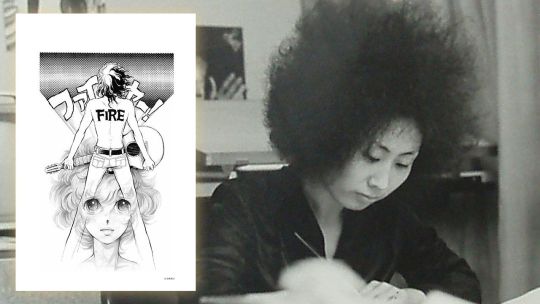
Hideko Mizuno and a page of one of her most celebrated works, "Fire."
Mizuno was one of the first women to create manga, worked as an assistant to Osamu Tezuka, and was behind several massive hits that had a significant impact on women in the '50s, '60s, and '70s. In fact, the most iconic shoujo manga-kas from the '70s golden period directly mention her as an influence. She fought to include romance -- now the essential element in girls' manga -- in her works back when such topics were deemed inappropriate by male editors.
Mizuno's repertoire was vast: she wrote mangas about little girls and their poneys, magic adventures, and romcoms based on Audrey Hepburn's movies, and she drew the first sex scene in a shoujo manga. The manga in question was "Fire," a teen-targeted manga featuring a rebellious American rocker, which broke new ground by having a male character as its focal point. Alongside other notable female artists from the '60s, Mizuno laid the groundwork for the '70s shoujo explosion, during which girls' comics took center stage.
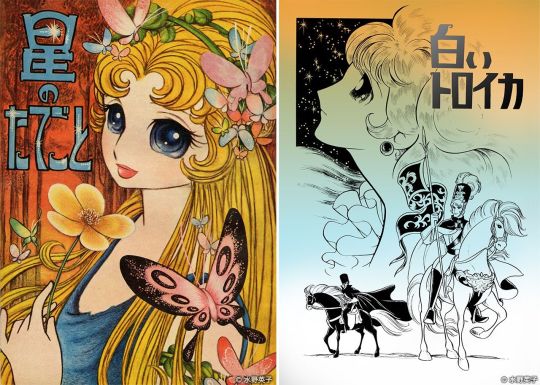
In 1960's "Hoshi no Tategoto" (left,) Hideko Mizuno created the first shoujo love story. Serialized in Weekly Margaret between 1964 and 65, "Shiroi Troika," set during the Russian Revolution, was the first historical shoujo manga.
A contributing factor to this "golden period" was the emergence of several shoujo mangas as unstoppable hits, selling millions of copies and becoming cultural phenomena. These titles, considered masterpieces, continue to be read and known by multiple generations.
The BeruBara Boom
"Attack No. 1"'s success spread far and wide, forcing Japanese society to take note of the potential of the shoujo segment. Right after this historic success, Shueisha's Weekly Margaret hit the jackpot once again with another epoch-defining manga hit, Ryoko Ikeda's "The Rose of Versailles," which debuted in 1972. Set in the years preceding and during the French Revolution, it weaved together historical figures like Marie Antoinette and fictional ones, like the iconic Lady Oscar, a handsome noblewoman raised as a boy to succeed her father as the commander of the Royal Guard at the Palace of Versailles.

The first volume of the original comic had Marie Antoinette on the cover as Margaret's editors believed she'd be the favorite character. However, the androgynous Lady Oscar turned into a fan fave and the absolute star of the series, which is reflected on the cover of most rereleases since then, including the 2013 bunko version seen above.
When talking about shoujo manga classics from the '70s that are familiar to everyone in Japan, "Rose of Versailles" is probably the first name that comes to mind. It was a hit that really defined the era and impacted the country as a whole. While Marie Antoinette is seen around the world as a tragic, out-of-touch figure, in Japan, many women and girls see her as an aspirational historical fashion icon. While Sofia Coppola's 2006 film "Marie Antoinette" solidified this among younger generations, it was Ikeda's gentle portrait that made her a character loved by so many across all age groups.
When conceptualizing the story, Ikeda was heavily inspired by Stefan Zweig's "Marie Antoinette: The Portrait of an Average Woman," which she read while in high school. Once in college, in the late '60s, she, like millions of others, was heavily involved with the Marxist student movements. These references led to a historical romance that touched on heavy and revolutionary themes, which was atypical for a shoujo manga, a segment that, back then, was primarily catered to elementary school-aged girls.
Because of its unorthodox concept, Margaret's editors were unsure about the series. But right from the start, "BeruBara" (derived from the original Japanese title, "Berusaiyu no Bara"), serialized between 1972 and 1973, was an explosive hit, quickly turning into Weekly Margaret's most popular series. It was compiled in 10 tankobon volumes published, which sold tens of millions of copies. In fact, according to some stats, it is the best-selling '70s manga across all genres in total sales.
In 1974, after the original manga had finished its serialization, Takarazuka Revue, an all-female theatrical troupe, announced a stage adaptation of the story.

Posters of the first three Takarazuka adaptations, from between 1974 and 1975. Since then, the Revue has adapted the manga 11 times, with a new run scheduled for 2024.
The Revue was established in 1913 by the owner of Kansai's leading railway company, Hankyu, to boost tourism to the city of Takarazuka, his line's last stop. It was a huge success, and soon, the group had its own luxurious theater as well as its very exclusive academy where young ladies underwent an arduous audition process to become Takaraziennes. In 1934, a second Takarazuka theater opened in Tokyo.
However, in the early 1970s, Takarazuka faced stagnation, with declining ticket sales attributed to the growing popularity of alternative entertainment forms such as cinema and television.
In 1973, Shinji Ueda, who had risen through the Takarazuka ranks as a director, made his debut as a playwriter in the company with a musical based on ancient Japanese history. While thinking about his next project, he decided to check out a manga popular with some Takarazuka fans, "Rose of Versailles," and he quickly realized it was the perfect theme for an adaptation. Lady Oscar, who had lady-like features but was also as handsome as a man, was the embodiment of the male role-playing Takaraziennes. Ueda reached out to Ryoko Ikeda, who, as an admirer of the troupe, quickly granted the rights.
But Ikeda and Ueda's excitement wasn't shared by many. Most of the Takarazuka team were skeptical about a play inspired by something as vulgar as a manga. Fans of the original were also highly protective of its characters and entirely against a live adaptation.
Amid this climate of distrust, the play opened at the end of August 1974 at the Takarazuka Grand Theater. The reaction after the first night was extremely positive. Soon, Takarazuka's "Rose of Versailles" was the hottest ticket in all of Japan, with the press breathlessly covering the "BeruBara boom" that led thousands of people to stand hours in line to get tickets to the coveted performances in Kansai and Tokyo. Ikeda herself was shocked by the media phenomenon when she returned from an overseas trip and had hundreds of reporters awaiting her at the airport.

A statue of Lady Oscar and Andre surrounded by rose bushes sits outside the Takarazuka Grand Theater in Hyogo, Japan.
The "BeruBara" media sensation single-handedly reversed Takarazuka's fortunes, leading to record-shattering ticket sales for the company. The Takarazuka Academy, which had seen declining applicants, suddenly became highly sought-after again, originating the saying "Todai in the East, Takarazuka in the West," comparing it to Tokyo University, the most prestigious university in Japan. The phrase underscored the desirability and prestige associated with a position at the troupe.
Ultimately, the success of "The Rose of Versailles" propelled Takarazuka back to the pinnacle of the entertainment industry, a position it maintains to this day. The brand continues to hold great esteem among women of all ages in Japan, with Takarazuka's stage adaptations, derived from Broadway musicals, movies, novels, and shoujo manga, consistently selling out. Notably, various adaptations of "BeruBara" have collectively sold over 5 million tickets since 1974.
Following the manga and Takarazuka adaptation's explosive success, the anime debuted in 1979. While the anime received acclaim, Ikeda herself was not entirely satisfied, mainly due to the treatment of her favorite character, Andre, who played a significant role in the manga but had a minor presence in the animated version, which focused almost entirely on the manga's most popular character, Lady Oscar.

In 2013, celebrating Margaret's 50th anniversary, new special chapters of "BeruBara" were published. The first new story in 40 years resulted in Margaret magazine selling out across the country.
"BeruBara" remains a prominent franchise in Japan, spawning numerous licensed products, sequels, and spin-offs. Ryoko Ikeda, known for other successful series, continues to garner widespread respect and media attention. However, while almost everything related to "The Rose of Versailles" turned into a hit, there was an exception.
In March 1979, a few months before the anime premiere, a live-action film adaptation debuted with great fanfare. Fittingly for such a hot property, the movie was one of the most ambitious productions in Japanese cinema, with a substantial 1 billion yen budget.
The Palace of Versailles granted permission to shoot in its interior. The filming was in English, with a European cast. The project was helmed by France's hottest movie director, Jacques Demy. Demy wasn't respected only in the West but also in Japan, where his two most important films, "The Umbrellas of Cherbourg" (1964) and "The Young Girls of Rochefort (1967)," were also hits. In fact, to this day, both flicks remain popular among trend-conscious Japanese as examples of stylish oshare movies that fully capture aspirational girls' culture (alongside, among others, Sofia Coppola's "Marie Antoinette"). Demy, the mind behind dreamy, girly movies, seemed like the perfect choice to turn this blockbuster shoujo classic into a live-action film.
The movie had the backing of three gigantic domestic corporations: Toho, the leading Japanese movie distributor; Nihon Terebi (NTV), one of the main TV stations; and cosmetic giant Shiseido. NTV and Shiseido made sure the movie had one of the most extensive marketing campaigns Japan had ever witnessed. The TV station aired specials and segments on this grand production. Meanwhile, Shiseido made the star of the movie -- British actress Catriona McCall, who played Oscar -- the face of its spring campaign, promoting its new Red Rose lipstick. Catriona was plastered on billboards across the country, made media and department store appearances, and starred in luxurious TV spots.
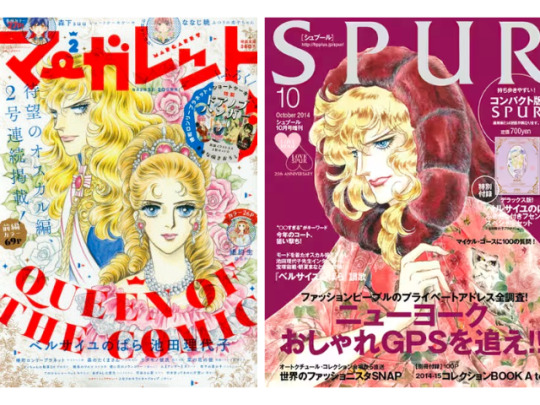
On the left, Lady Oscar and Marie Antoinette adorn the cover of Margaret in 2016, over 40 years after the end of the original serialization. On the right, Oscar models Dolce & Gabanna new collection for high-end fashion magazine Spur in 2014, celebrating 40 years of the conclusion of the original manga.
Back then, Kanebo, the second biggest local cosmetic company, was in fierce competition with Shiseido. TV ads from both companies had a tremendous impact, propelling singles to the top of the charts, and there was a battle on which commercial would feature the biggest hit. But, in the spring of 79, the focus of the fight changed. As a response to the Catriona "Rose of Versailles" campaign, Kanebo also hired a British beauty, actress Olivia Hussey, and launched a "Super Rose lipstick" with the tagline "You are more beautiful than a rose." The cosmetics war was another proof of the chokehold "The Rose of Versailles" had in the decade.
But when the movie finally premiered, it was a flop. Critics hated it, and Japanese fans thought the adaptation was weak and lacked impact. Catriona, in particular, was criticized for not conveying Oscar's androgynous charm, which perfectly balanced masculinity and femininity. With the well-received anime premiering just a few months later, the expensive movie adaptation ended up being outshone and forgotten. It became only a costly footnote in the manga's history.
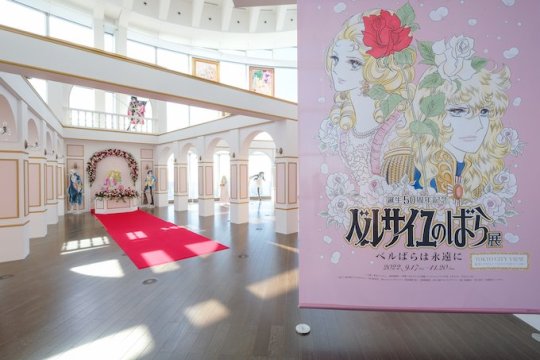
An exhibition in Tokyo celebrates 50 years of BeruBara in 2022.
(It's worth noting that Kanebo clearly won the CM war. While the Shiseido co-produced "Rose of Versaille" feature film flopped, the "You Are More Beautiful than a Rose" song Kanebo commissioned from singer Akira Fuse became a considerable hit).
Movie aside, "The Rose of Versailles" is one of Japan's most beloved comics. From its debut in 1971 to its film and anime adaptation in 1979, it remained front and center in the country's mind throughout the whole decade. Its impact was felt in different fields, from the cosmetic business to the publishing business, from live theater to TV. It also forever changed how shoujo manga was perceived and remains one of the country's most beloved properties.
Ace-Scoring Manga
The 1970s marked a turning point for shoujo manga, as it began to gain recognition beyond its traditional audience, propelled not just by critical acclaim but by commercial success. The era witnessed the emergence of several blockbusters that captured the public's imagination. Notable among them were Yoko Shoji's "Seito Shokun," a tale centered on the daily exploits of a mischievous high-schooler, and Waki Yamato's "Haikara-san ga Tooru," a love story set in the Meiji period featuring a tomboy with a lady-like demeanor. These manga were significant hits during their publication in Kodansha's Shoujo Friends, becoming best-selling titles with tens of millions of copies sold.
Some shoujo classics from the '70s are still in publication today, appealing to a diverse readership spanning multiple generations. Suzue Michi's "Glass Mask," serialized in Hana to Yume since 1976, remains a cultural phenomenon with 49 tankobon volumes, over 55 million copies sold, an anime adaptation, a live-action drama, and a stage play. Similarly, Chieko Hosokawa's "Crest of the Royal Family," chronicling the adventures of a young American girl transported to ancient Egypt, has been a consistent presence in Princess magazine since 1976, boasting 69 volumes and over 45 million copies sold to date.
But, when talking about definitive shoujo classics from the '70s, titles that were historical successes, influenced everything going forward, and are known by everyone, three titles come to mind. We already explored one of these, "The Rose of Versailles." One of the other three is "Ace wo Nerae."

Following the monumental success of "Attack No. 1," the prospects of another shoujo sports manga achieving similar heights of popularity seemed improbable. However, Weekly Margaret defied expectations once more in 1973 with the release of Suzumika Yamamoto's "Ace wo Nerae" ("Aim for the Ace"), a compelling narrative focused on tennis that swiftly captured the nation's attention.
Japan and tennis already had some prior history. The first Japanese Olympic medalist was a tennis player, Ichy Kumagae, in 1920. Emperor Akihito met his commoner wife, Michiko, at a tennis match, and they initially bonded over their love for the sport. But, in the 70s, the country was taken over by an unprecedented tennis boom. At high schools across the nation, tennis became the most popular after-school activity. Fashion magazines like JJ and Popeye dedicated pages and pages to "tennis fashion." At the same time, trendy young adults decked in clothes from sports brands populated Shibuya and other stylish districts in Tokyo.
There were several contributors to the tennis boom. But the remarkable success of "Ace wo Nerae," which first conquered girls before dominating the nation, played a part in it.
The manga follows the journey of Hiromi Oka, a high school student initially plagued by insecurities but propelled into the world of tennis through the encouragement of her coach. "Ace wo Nerae" portrays her growth from a hesitant newcomer to a world-class tennis player, navigating challenges and discovering hidden potential along the way.

From left to right: Madame Butterfly, lead character Hiromi Oka and coach Jin Murakata as depicted in the anime. Madame Butterfly, a wealthy teen girl who is gentle and a world-class tennis player, is a fan favorite character.
In 1973, "Ace wo Nerae" was adapted into an anime. Despite initial modest ratings, the anime gained popularity through reruns. Encouraged by this, NTV decided to remake the cartoon. The second adaptation, which debuted in 1978, was an immediate hit. Concurrently, Weekly Margaret revived the manga series, which, after being first finalized in 1975, ran again from 1978 to 1980, spanning a total of 18 volumes.
Since "Ace wo Nerae," several hit mangas focused on tennis -- both shoujo and shonen -- were published. But, thanks to the success of its anime and the intragenerational support for the manga, the original work by Suzumika Yamamoto is still considered one of the defining and most beloved works about the sport. Its role in propelling tennis culture as part of the oshare youth culture of the '70s also defines its impact.
Japan Wants Candy
Following the monumental multimedia success of "The Rose of Versailles" and "Ace wo Nerae," the third shoujo sensation of the '70s is "Candy Candy."
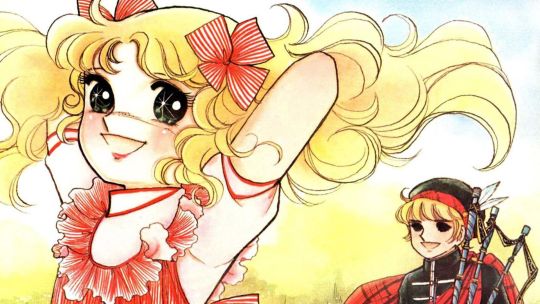
Initially published in Nakayoshi, the story started taking shape when editors at the magazine sought a work of literary excellence akin to beloved classics popular among girls, like "Heidi" and "Anne of Green Gables." They enlisted Keiko Nagita, writing under the pen name Kyoko Mizuki, and paired her with one of the magazine's most famous artists, Yumiko Igarashi. The collaborative effort resulted in the creation of "Candy Candy," centered around an American, blond, blue-eyed orphan named Candice "Candy" White Ardlay.
"Candy Candy" epitomized various shoujo directions prevalent in the '70s. The protagonist, a white girl with lustrous blonde hair, embodied the fascination with Western culture during a time when Japanese youth held a keen interest in Europe and the United States. The manga's narrative style, characterized by its dramatic tone and plot twists, also aligned with the prevalent storytelling preferences of the era.
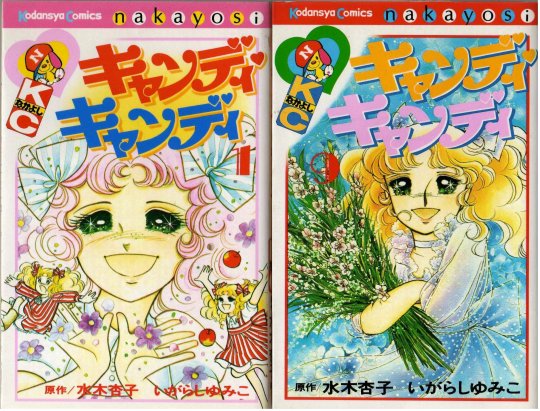
Candy Candy was such a resounding success that it became the first manga to achieve an initial print run of over 1 million copies of one of its paperback compilations.
Debuting in 1975, "Candy Candy" swiftly captured the hearts of Nakayoshi's readers, leading to unprecedented success. The subsequent anime adaptation by Toei in the following year propelled the franchise into the realm of a cultural phenomenon, sending manga tankobon sales skyrocketing. The seventh volume of the "Candy Candy" compiled paperback reportedly became the first Japanese manga to achieve an initial print run of over 1 million copies. Additionally, Nakayoshi's sales surged, surpassing those of its historical rival, Shueisha's Ribon, for the first (and only) time.
The adventures of young Candy were also licensing gold. With over 100 licensed products, the "Candy Candy" doll alone sold 2 million units, solidifying Bandai's position as Japan's premier toymaker, a status it continues to uphold to this day. The resounding success of "Candy Candy" forged a lasting alliance between Kodansha's Nakayoshi, Toei Animation, and toymaker Bandai, which led to the iconic "Sailor Moon" franchise in the 1990s.
While "Candy Candy" concluded its run in 1979, its appeal extended far beyond its original target demographic of very young girls, captivating kids, teenagers, and adults alike, thus contributing significantly to the manga and anime's widespread acclaim and enduring popularity.
However, a protracted legal dispute between Igarashi and Nagita has prevented the commercialization of any "Candy Candy" related products since the late 1990s, including reprints of the manga and re-broadcasting of the anime. The lawsuit arose from Igarashi's unauthorized licensing of merchandise based on the franchise, falsely asserting sole ownership of the copyright. Although Igarashi was initially credited as the lead artist in Nakayoshi during the manga's publication, the court ultimately ruled in Nagita's favor, emphasizing that Igarashi's artistic foundation was built upon Nagita's written work.
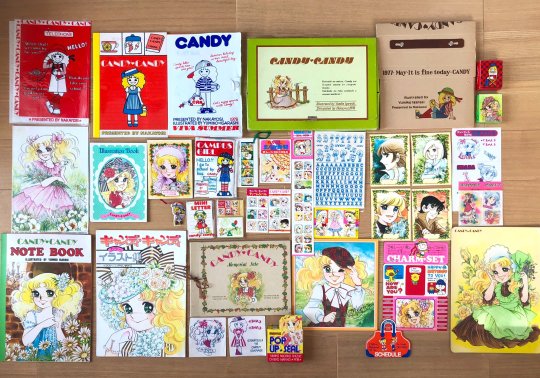
A collection of "Candy Candy" freebies offered by Nakayoshi magazine in the '70s. During the publication of the series, Nakayoshi would eclipse Ribon's sales for the one and only time in its history, (image credit)
Consequently, any commercial exploitation of Yumiko Igarashi's "Candy Candy" artwork necessitates the approval of both Igarashi and Nagita, a challenging prospect given the existing feud. Nagita, on the other hand, can profit from "Candy Candy" as long as she doesn't include any illustrations, which allowed her to release a book sequel in 2010. However, due to the dispute, one of the most beloved works in Japanese manga history is currently out of print. The lawsuit also blocks the anime from being aired or distributed. But, despite the almost two-decades-long media ban, "Candy Candy" remains widely known and beloved across Japan, a testament to its staying power.
While smash hits like "Candy Candy," "Ace wo Nerae," "Rose of Versailles," "Seito Shokun," "Hikara-san ga Tooru," and "Glass Mask," among others were key pieces into shoujo finally earning the respect it deserved, the rise of a revolutionary group of artists during the '70s was another critical element in shoujo's rise: the Year of 24 Group.
Part 2
#1970s japan#1970s#vintage shoujo#shoujo manga#lady oscar#rose of versailles#ace wo nerae#candy candy
102 notes
·
View notes
Text
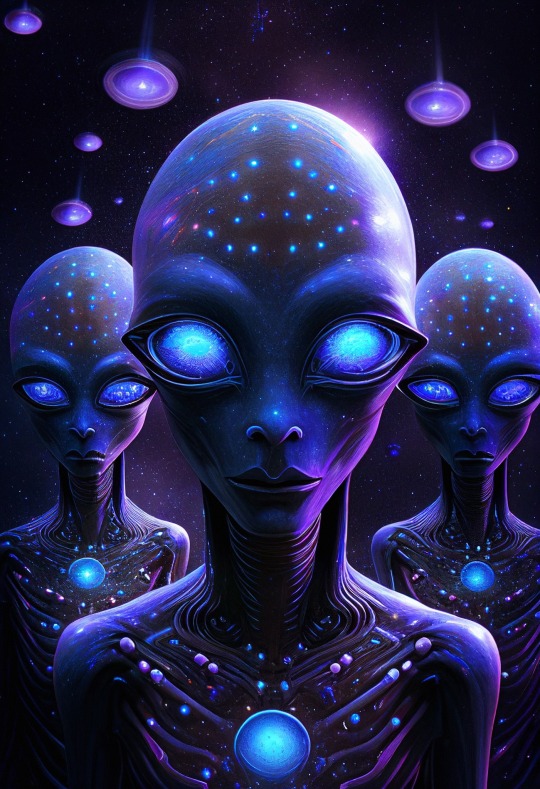
🔹The Sirians🔹 Talon Abraxas
Uncovering Your Cosmic Origins: Traits, Gifts & Soul Mission of Sirian Starseeds on Earth
The Sirius Star System: Home of Sirian Starseeds
Sirius binary star system located approximately 8.7 light years from Earth in the Canis Major constellation. Comprises Sirius A, the brightest star visible in the night sky, and a smaller white dwarf Sirius B orbiting Sirius A. Sirius B was once a larger, brighter star than Sirius A in the distant past before evolving into a white dwarf.
Sirius is known by many names in ancient Earth cultures including “Dog Star” and “Nile Star.” Egyptians based the calendar on Sirius helical rising coinciding with the Nile annual flooding. Marked winter season for Polynesians and chronicled in ancient Vedic scriptures.
Sirius A believed inhabited by highly advanced spiritual beings focused on overseeing the ascension of the Sirius system itself. Sirius B original home of Sirian starseeds before the system underwent cosmic evolution. Sirians from advanced water planets were forced to evacuate when Sirius B transformed from a gaseous state into a white dwarf star. Although the home world forever changed, spiritual wisdom and technologies survived to pass down ensuing generations.
The Soul Mission of Sirian Starseeds on Earth
What drives Sirians to voluntarily incarnate on Earth again and again even when the planet is still so chaotic and dense? Each starseed has an overarching mission guiding its incarnations, though the specifics will vary. Here are some of the core objectives behind the Sirian Starseed soul contracts:
Activate higher dimensional portals and light grids on Earth’s power points and sacred sites. Sirians are encoded with advanced sacred geometrical information and wisdom from Atlantis which can energize and stabilize the crystalline grid now rising.
Anchor light and frequency through their energy field and presence. By simply existing in a high vibration of love, gratitude, and inner peace, they raise the resonance of their environment and touch all souls they contact.
Awaken humanity to its true origins, unlimited potential, and purpose for being here now. Sirians remind us of our divine nature and push us to expand our limited beliefs.
Prepare humanity for open contact with the galactic community of benevolent interstellar civilizations. Sirians educate people on ETs and bridge the gap between human and cosmic perspectives.
Teach advanced technology and innovation to be responsibly integrated for the planet’s greater good. As technically skilled as they are spiritually adept, Sirians guide how humanity can evolve through technology without misusing it.
Be spiritual teachers, healers, and leaders who reveal higher truths and inspire people to live in harmony, peace, and unity. Their wisdom and grace touch people’s hearts.
Protect and speak up for the vulnerable, oppressed, excluded, or environment. Sirians act from a place of selfless compassion that honors all life.
Help shift humanity out of duality consciousness, fear-based programming, and rigid belief systems by embodying Unconditional Love and unity consciousness.
As multidimensional light beings, Sirians work on many levels and domains to uplift humanity’s understanding and play a pivotal role at this incredible time in our planet’s ascension process.
25 notes
·
View notes
Text
On the subject of generative AI
Let me start with an apology for deviating from the usual content, and for the wall of text ahead of you. Hopefully, it'll be informative, instructive, and thought-provoking. A couple days ago I released a hastily put-together preset collection as an experiment in 3 aspects of ReShade and virtual photography: MultiLUT to provide a fast, consistent tone to the rendered image, StageDepth for layered textures at different distances, and tone-matching (something that I discussed recently).
For the frames themselves, I used generative AI to create mood boards and provide the visual elements that I later post-processed to create the transparent layers, and worked on creating cohesive LUTs to match the overall tone. As a result, some expressed disappointment and disgust. So let's talk about it.
The concerns of anti-AI groups are significant and must not be overlooked. Fear, which is often justified, serves as a palpable common denominator. While technology is involved, my opinion is that our main concern should be on how companies could misuse it and exclude those most directly affected by decision-making processes.
Throughout history, concerns about technological disruption have been recurring themes, as I can attest from personal experience. Every innovation wave, from typewriters to microcomputers to the shift from analog to digital photography, caused worries about job security and creative control. Astonishingly, even the concept of “Control+Z” (undo) in digital art once drew criticism, with some artists lamenting, “Now you can’t own your mistakes.” Yet, despite initial misgivings and hurdles, these technological advancements have ultimately democratized creative tools, facilitating the widespread adoption of digital photography and design, among other fields.
The history of technology’s disruptive impact is paralleled by its evolution into a democratizing force. Take, for instance, the personal computer: a once-tremendous disruptor that now resides in our pockets, bags, and homes. These devices have empowered modern-day professionals to participate in a global economy and transformed the way we conduct business, pursue education, access entertainment, and communicate with one another.
Labor resistance to technological change has often culminated in defeat. An illustrative example brought up in this NYT article unfolded in 1986 when Rupert Murdoch relocated newspaper production from Fleet Street to a modern facility, leading to the abrupt dismissal of 6,000 workers. Instead of negotiating a gradual transition with worker support, the union’s absolute resistance to the technological change resulted in a loss with no compensation, underscoring the importance of strategic adaptation.
Surprisingly, the Writers Guild of America (W.G.A.) took a different approach when confronted with AI tools like ChatGPT. Rather than seeking an outright ban, they aimed to ensure that if AI was used to enhance writers’ productivity or quality, then guild members would receive a fair share of the benefits. Their efforts bore fruit, providing a promising model for other professional associations.
The crucial insight from these historical instances is that a thorough understanding of technology and strategic action can empower professionals to shape their future. In the current context, addressing AI-related concerns necessitates embracing knowledge, dispelling unwarranted fears, and arriving at negotiation tables equipped with informed decisions.
It's essential to develop and use AI in a responsible and ethical manner; developing safeguards against potential harm is necessary. It is important to have open and transparent conversations about the potential benefits and risks of AI.
Involving workers and other stakeholders in the decision-making process around AI development and deployment is a way to do this. The goal is to make sure AI benefits everyone and not just a chosen few.
While advocates for an outright ban on AI may have the best interests of fellow creatives in mind, unity and informed collaboration among those affected hold the key to ensuring a meaningful future where professionals are fairly compensated for their work. By excluding themselves from the discussion and ostracizing others who share most of their values and goals, they end up weakening chances of meaningful change; we need to understand the technology, its possibilities, and how it can be steered toward benefitting those they source from. And that involves practical experimentation, too. Carl Sagan, in his book 'The Demon-Haunted World: Science as a Candle in the Dark', said:
"I have a foreboding […] when the United States is a service and information economy; when nearly all the manufacturing industries have slipped away to other countries; when awesome technological powers are in the hands of a very few, and no one representing the public interest can even grasp the issues; when the people have lost the ability to set their own agendas or knowledgeably question those in authority; when, clutching our crystals and nervously consulting our horoscopes, our critical faculties in decline, unable to distinguish between what feels good and what's true, we slide, almost without noticing, back into superstition and darkness."
In a more personal tone, I'm proud to be married to a wonderful woman - an artist who has her physical artwork in all 50 US states, and several pieces sold around the world. For the last few years she has been studying and adapting her knowledge from analog to digital art, a fact that deeply inspired me to translate real photography practices to the virtual world of Eorzea. In the last months, she has been digging deep into generative AI in order to understand not only how it'll impact her professional life, but also how it can merge with her knowledge so it can enrich and benefit her art; this effort gives her the necessary clarity to voice her concerns, make her own choices and set her own agenda. I wish more people could see how useful her willingness and courage to dive into new technologies in order to understand their impact could be to help shape their own futures.
By comprehending AI and adopting a collective approach, we can transform the current challenges into opportunities. The democratization and responsible utilization of AI can herald a brighter future, where technology becomes a tool for empowerment and unity prevails over division. And now, let's go back to posting about pretty things.
103 notes
·
View notes